Ep. 99: Pluto: Urasawa x Tezuka Vol. 1, by Naoki Urasawa
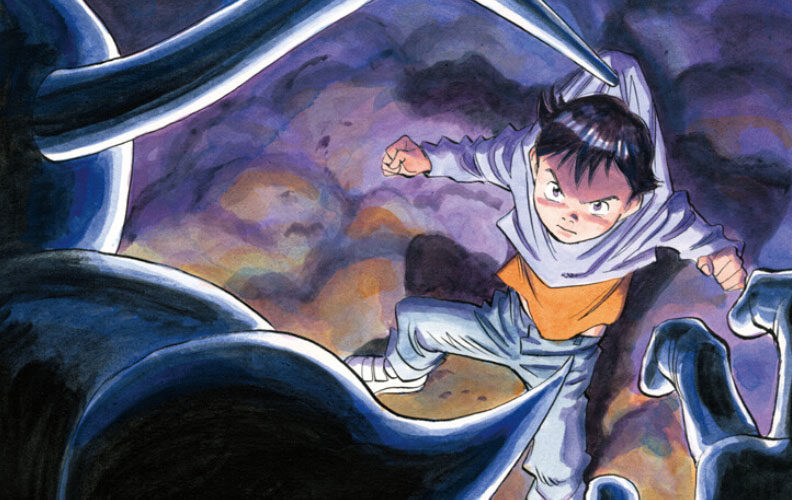
The manga you’ve been waiting for Mangasplaining to cover has finally arrived! The Mangang dives into PLUTO volume 1, Naoki Urasawa’s epic reimagining of Osamu Tezuka’s Astro Boy story ‘The World’s Strongest Robot!’ But will this first volume live up to the hype? Is it the Watchmen of manga, or the Ultimate Spider-Man… or something else? This and so much more on episode 99 of Mangasplaining.
Powered by RedCircle
Listen and Subscribe to the Podcast:
Google | Apple | Stitcher | RedCircle | Amazon | Radio Public | PocketCast | Spotify
IN THIS EPISODE
00:00 Pluto Vol. 1
57:12 THE BREAK
58:00 We pick new books! Something funny, something cute, and something dark. Ooo!
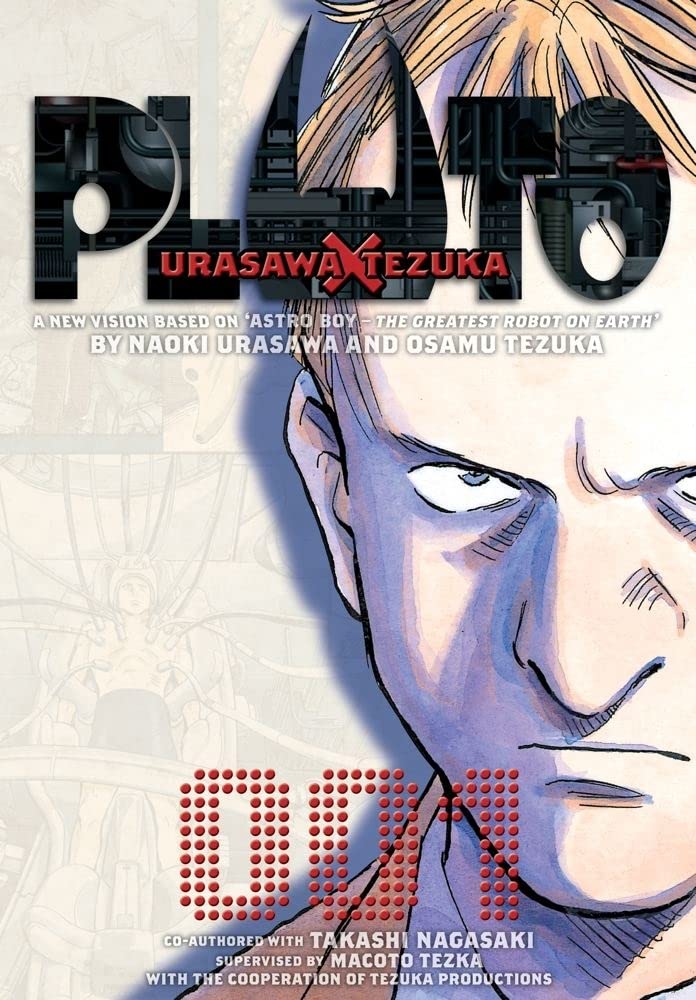
Pluto: Urasawa x Tezuka Volume 1
By Naoki Ursawa and Osamu Tezuka
Co-authored with Takashi Nagasaki with the cooperation of Tezuka Productions
Translated by Jared Cook & Frederik L. Schodt
Lettering by James Gaubatz
Edited by Andy Nakatani
Published by VIZ Media. Available in print only, at present.
Audio editing by David Brothers. Show notes by Christopher Woodrow-Butcher and Deb Aoki
BEFORE WE GET STARTED
[CHRISTOPHER:] Hi y’all, Christopher here. I was ALLLL over the place with the episode numbering this week, when talking about this episode, next episode, the books we were picking, etc. Ignore me. The correct episode order for upcoming episodes is listed at the end of this episode. If you’re reading this at mangasplaining.com, the upcoming episode list is also in the sidebar on the right.
ALSO! There is no digital English edition of Pluto, only physical editions. A digital English edition might come one day soon, but just so you know, Urasawa was one of those creators who famously did not allow digital editions of his work at all, but changed his mind for the Japanese editions relatively recently. So for this episode, you’ll have a to settle for some screenshots from the Japanese edition, as well as some photos from the English.
[DEB:] Naoki Urasawa explained his point of view on why he wasn’t so keen on digital editions of his manga in a YouTube video from his official YouTube channel, mostly because in digital (especially on a phone), manga is seen one page at a time, while most manga artists create thinking of the story as being seen as a 2-page spread when it’s read in a book or magazine format. His thoughts on this subject starts from the :55 mark, and he’s talking about it because the digital editions of several of his manga series debuted in Japanese several months ago.
FINALLY! As mentioned, this story is an adaptation of Osama Tezuka’s Astro Boy: The World’s Greatest Robot. A longish short story available in English in Dark Horse’s Astro Boy Vol. 3. It’s in the Astro Boy Omnibus volume 1, and it’s also available with Comixology Unlimited on Kindle. Here’s the intro page from that story, featuring Osamu Tezuka himself reflecting on this story several years after it was originally published.
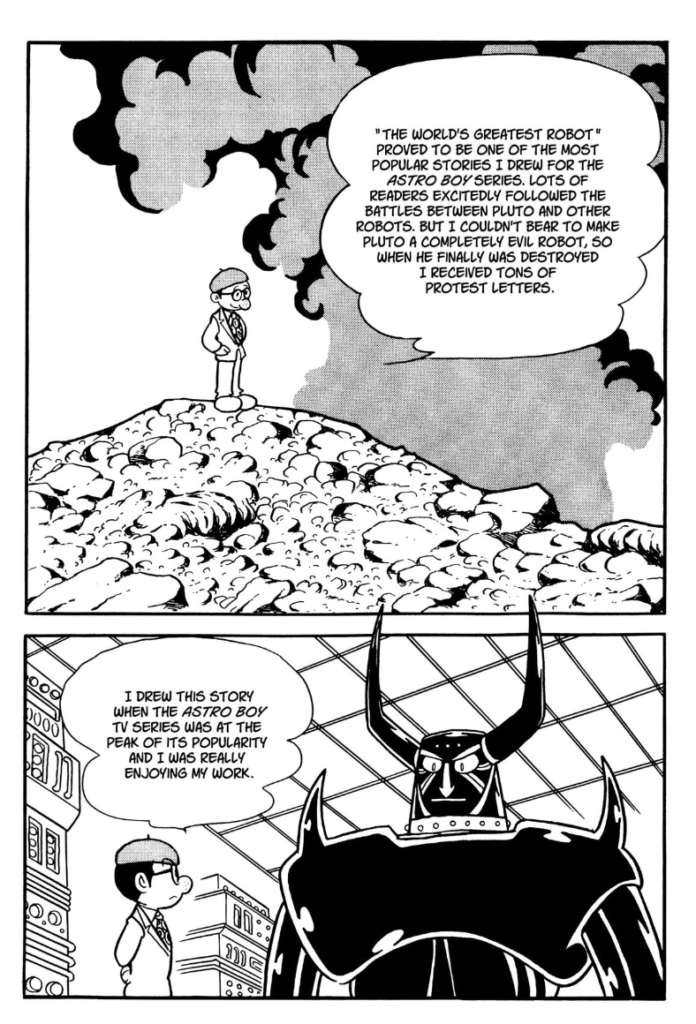
On with the show!
ABOUT NAOKI URASAWA
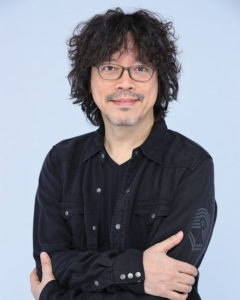
A towering creator in manga on both sides of the Pacific, Naoki Urasawa (born January 2, 1960) has been making manga since in 1982, where he took home the Shogakukan Big Comic Spirits “New Manga Award.” He met his editor Takashi Nagasaki then, and they continued to work together from then on, including today’s title Pluto.
[DEB:] I think we’ve mentioned this a few times in prior episodes, but it’s notable that Takashi Nagasaki gets co-authoring credit here on Pluto, which isn’t typical in Japanese manga publishing. The other one that comes to mind is the editor for Blue Giant who gets an author credit on this jazz manga (which we discussed in episode 64) under the pen name “Number 8.” Takashi Nagasaki has also written other manga series drawn by other artists, including action/suspense series King of Eden with Ignito that’s available now from Yen Press.
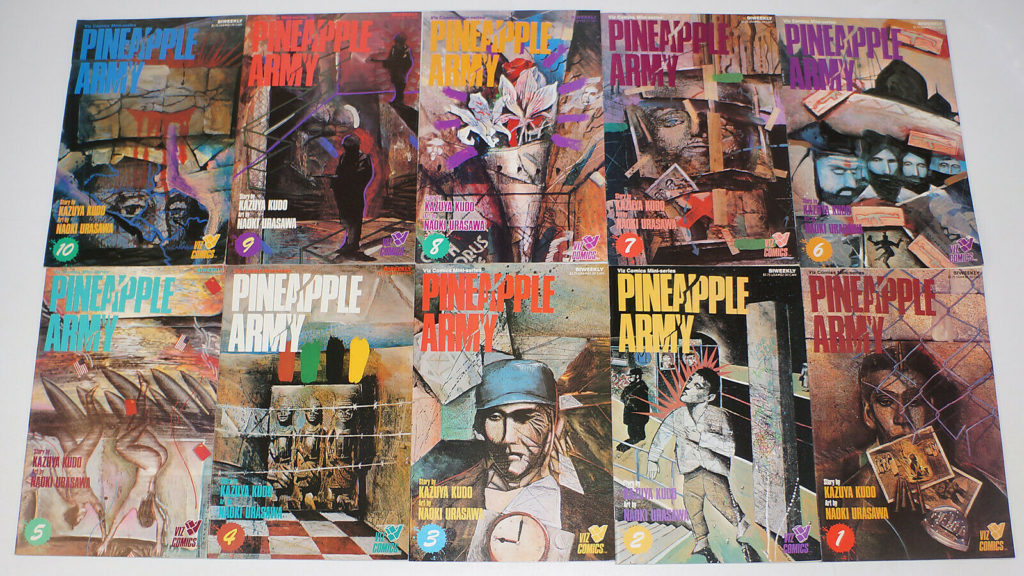
Urasawa’s debut in English was a little under-the-radar title from the early 1990s, Pineapple Army. Pineapple Army was originally serialized in Japanese in 1985. Viz managed to put out fewer than two volumes of the 8-volume series, both as single issue comics and as a graphic novel. While these books aren’t THAT expensive on the secondary market, they can be a little tricky to track down for hardcore fans.
[DEB:] When I first bought VIZ Media’s edition of Pineapple Army back in the day, the title didn’t make much sense until it was explained later that in this story, “pineapple” is a reference to grenades. In what will be a familiar refrain in this week’s show notes, if you want to read the whole series, you can check out the French edition perhaps, tho the Glenat editions of Pineapple Army is out of print in France too, alas.
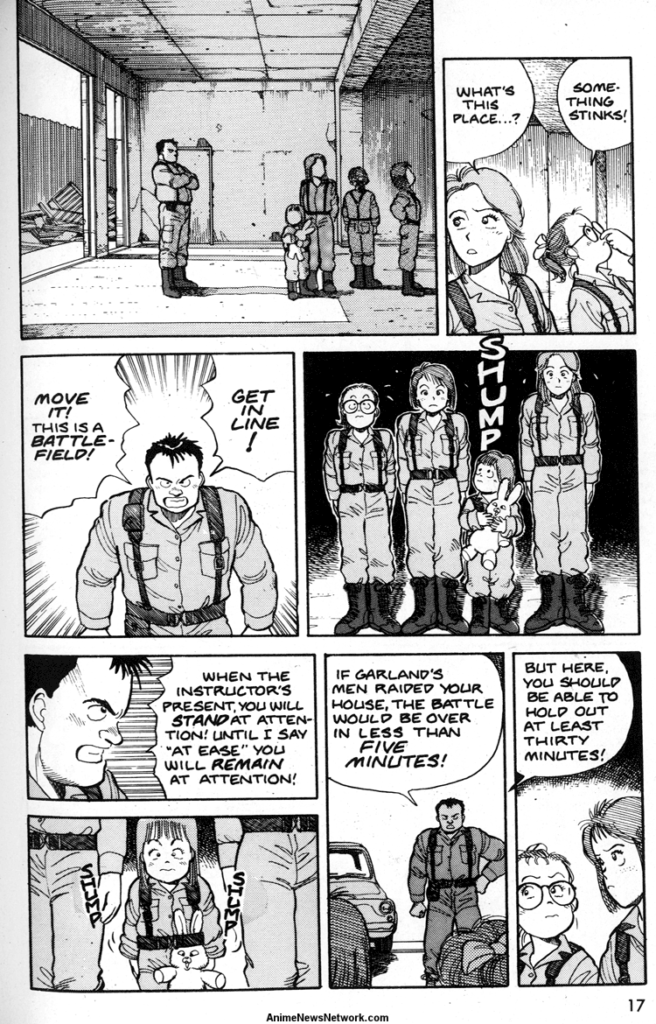
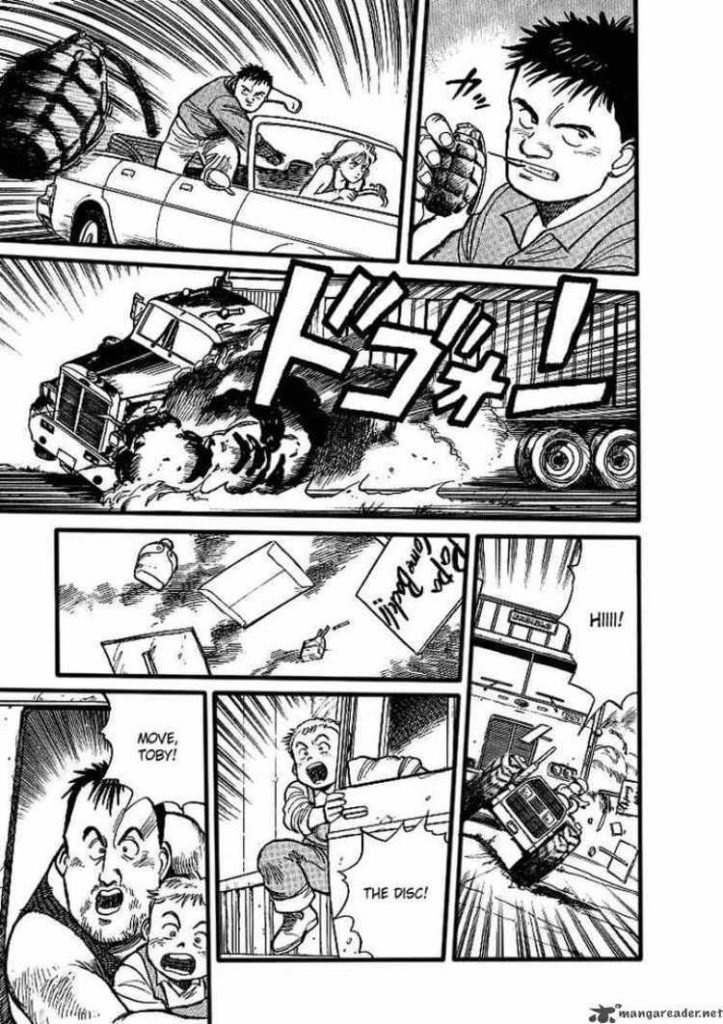
Then 15 years later in 2006, VIZ decided to give Urasawa’s manga another go with the suspense thriller Monster, originally published from 1994-2001. Probably because there was an anime getting made of the series, and those can really help make a title a hit…! Granted, Monster was already huge hit in Japan.
The story of a doctor who must atone for his greatest mistake in an ever-expanding series of international incidents, it had The Fugitive written all over it, and it’s pretty great comics. America thought so too, and Urasawa’s Monster was a success, even garnering praise from Pulitzer Prize winner Junot Diaz, who proclaimed “Urasawa is a national treasure in Japan.” This was a real rarity in 2006 for an adult-oriented seinen manga title. Not that common today, either.
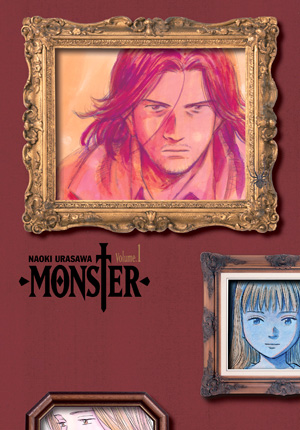
Monster’s success in English meant that, with the right conditions adult action/adventure manga like Urasawa’s could hit in North America, and there was probably no small push from Shogakukan to get his manga published in English given that he was (and remains) one of their biggest stars.
VIZ went ahead and licensed Urasawa’s next two series, both of which were ongoing at the time, 20th Century Boys and Pluto. This is pretty interesting for me as a reader, because North American fans would be getting both of these stories at more-or-less the same time, and Urasawa himself created both of these series at more-or-less the same time too, with 20th Century Boys originally serializing from 1999-2007 (with a hiatus in there), and Pluto serializing from 2003-2009. If you were wondering, yes, at the outset of 20th Century Boys, Urasawa was hospitalized for exhaustion AND hurt his shoulder so badly he could not draw and almost retired. So, uh, glad we got the manga I guess, but sad at what it cost him.
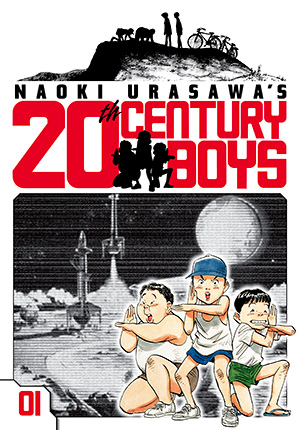
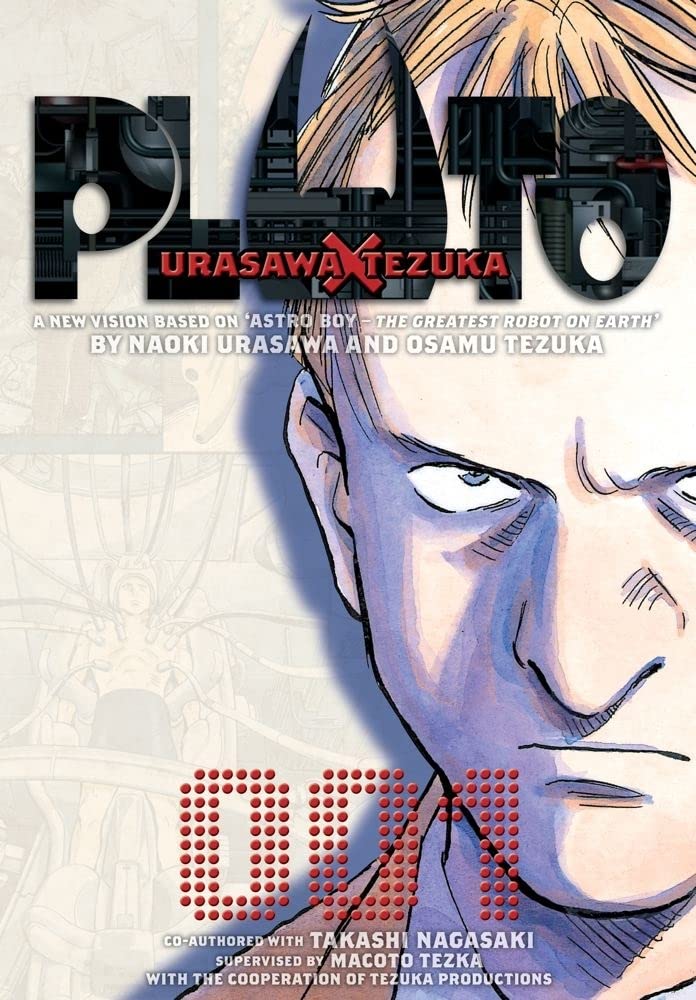
Funnily enough, VIZ licensed 20th Century Boys right away, but didn’t want to (or wasn’t allowed to? There’s some confusion on this part) release them simultaneously with Monster, and so they needed their serialization of Monster to be completed before they could release 20th Century Boys, which had been getting incredible buzz online.
Which brings us to Pluto, Urasawa’s comparatively short work (only 8 volumes to 20CB’s 24), and was also was a massive hit in Japan. This sort of ‘serious’ adaptation of an existing manga wasn’t entirely unheard of, but it was very rare, and to tackle one of Tezuka’s most-beloved and fondly-remembered Astro Boy stories, well, that’s a pretty big deal! Luckily the work is not just popular but universally beloved, having totally “stuck the landing” so to speak. So much so that the title is JUST about to get an anime adaptation on Netflix, which will be premiering this October.
Kind of wild for me personally to be seeing Netflix release Scott Pilgrim and Pluto as anime more-or-less back to back, as both series’ are pretty special to me.
Following the release of Pluto in English, things were pretty dry on the Urasawa publishing front for a while. There were serious market issues and contractions in the N. American manga publishing scene that made some of Urasawa’s older series a not-so-sure-thing. His follow-up series Billy Bat, another mystery-thriller with magical realist elements was produced for rival publisher Kodansha, which has made it EXTREMELY difficult to publish, at least with the rest of his books that are offered in English by VIZ Media. Urasawa left Kodansha right after that series ended too, so well, it’s kind of in English language publishing limbo, for various reasons that we can only speculate about. Fans do ask a lot why it was never picked up.
There are other notable absences in his English publishing history of Urasawa’s manga, including his early hits, judo manga Yawara! and tennis manga Happy!
[DEB:] There is a Yawara! anime, but it was released on DVD at a time when well… maybe the market wasn’t so receptive to such things. I think only half of the series is available with English subtitles, apparently due to some licensing issues. I know because I bought the first box set of the DVDs back in the day. But who knows if it’ll ever get a second chance to be released as a complete set, especially since it doesn’t seem like the manga version of this series about a “fashionable judo girl” will get an English release anytime soon. (Maybe learn French, if you want to read it. KANA has released several volumes of Yawara! in France.)
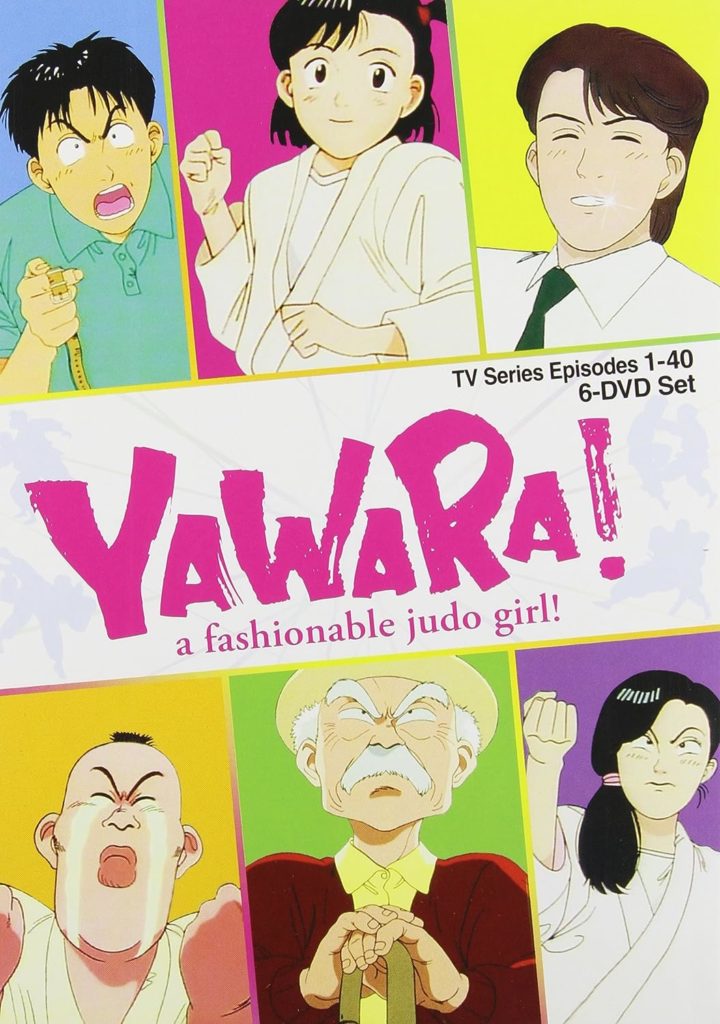
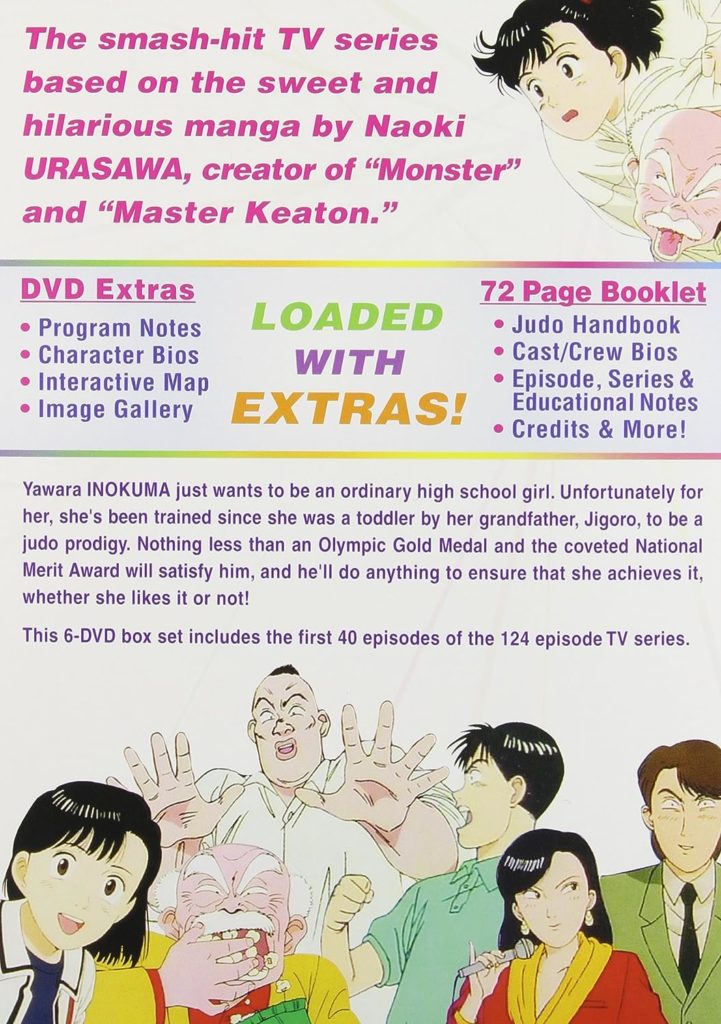
[DEB:] The other notable gap in the selection of Naoki Urasawa manga published in English is Billy Bat. If you want to see the Kodansha US peeps crinkle their nose and look pained at any comic or anime convention panel, ask them about publishing Billy Bat in English. (I’m joking. Please don’t.) But again… if the FRENCH, SPANISH, and GERMAN publishers can publish Billy Bat, why not any of the English language manga publishers? (shrugs in French)
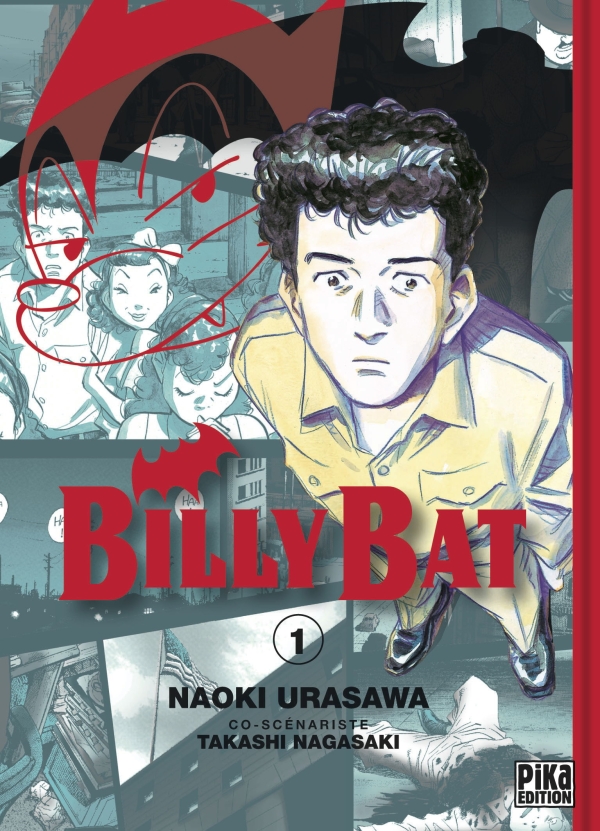
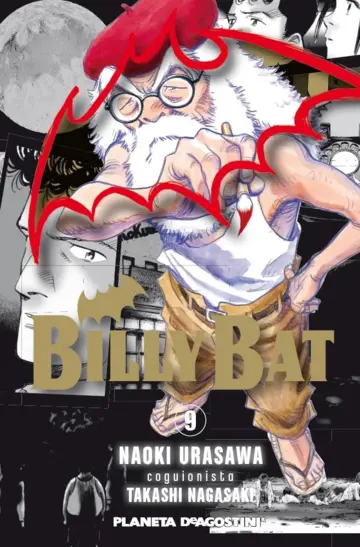
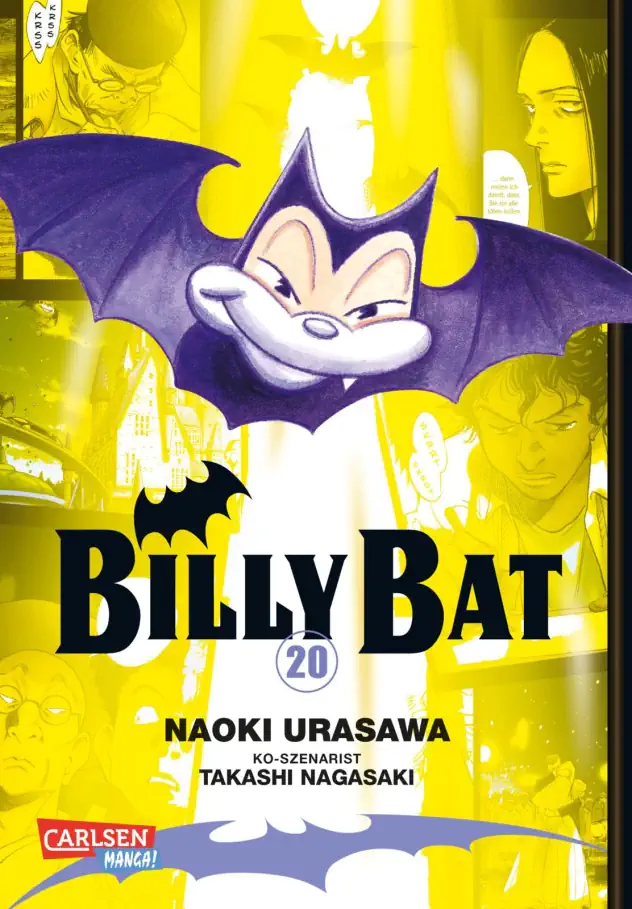
In fact, many of these titles actually disappeared during this time frame, with significant periods of time where 20th Century Boys, Pluto, and Monster were unavailable from most online and brick-and-mortar bookstores. Luckily, that seems to have finally been sorted out, with Monster getting omnibus “Perfect Editions” beginning in 2014, 20th Century Boy Omnibus “Perfect Editions” beginning in 2018, and a few standard reprints of Pluto.
In fact, I actually bought my copy of volume 1 in Kinokuniya in Tokyo for this episode, so go forth to the bookstores and buy with confidence.
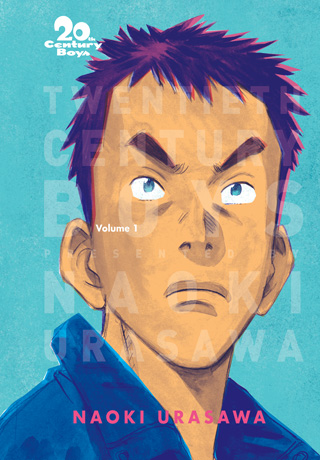
VIZ did eventually dig into Urasawa’s backlist with his Indiana Jones-meets-Mission-Impossible adventure series Master Keaton. They released the series as 2-in-1 editions from 2014. Following the globe-trotting adventures of a college professor / ex-Special Forces spy who moonlights as an insurance adjustor, Master Keaton is one of the best-selling manga series of all time, internationally, and has tremendous potential to appeal to a lot of readers who love these types of action-packed stories. But I get the sense that it didn’t quite hit in English as hoped.
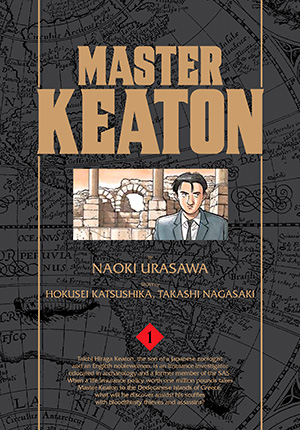
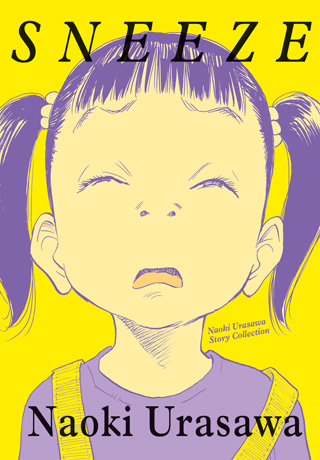
Following this release, VIZ published the one-shot manga Mujirishi: The Sign of Dreams, a bizarre story (that we have to read one day) in 2020, in addition to a much more ‘traditional’ short-story collection, Sneeze. It’s quite good, and includes some autobio comics about Urasawa’s trip to the US to see Neil Young and Paul McCartney play at an outdoor music festival.
[DEB:] Mujirushi is also fascinating for two reasons. One, it’s a story that’s set in the Louvre, one of several graphic novels that uses the iconic French museum as a backdrop for comics stories. The other three to note include Cats of the Louvre by Taiyo Matsumoto (Tekkon Kinkreet), Rohan at the Louvre by Hirohiko Araki (Jojo’s Bizarre Adventure) and Guardians of the Louvre by Jiro Taniguchi (A Journal of My Father).
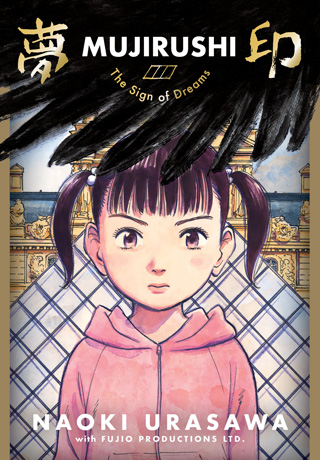
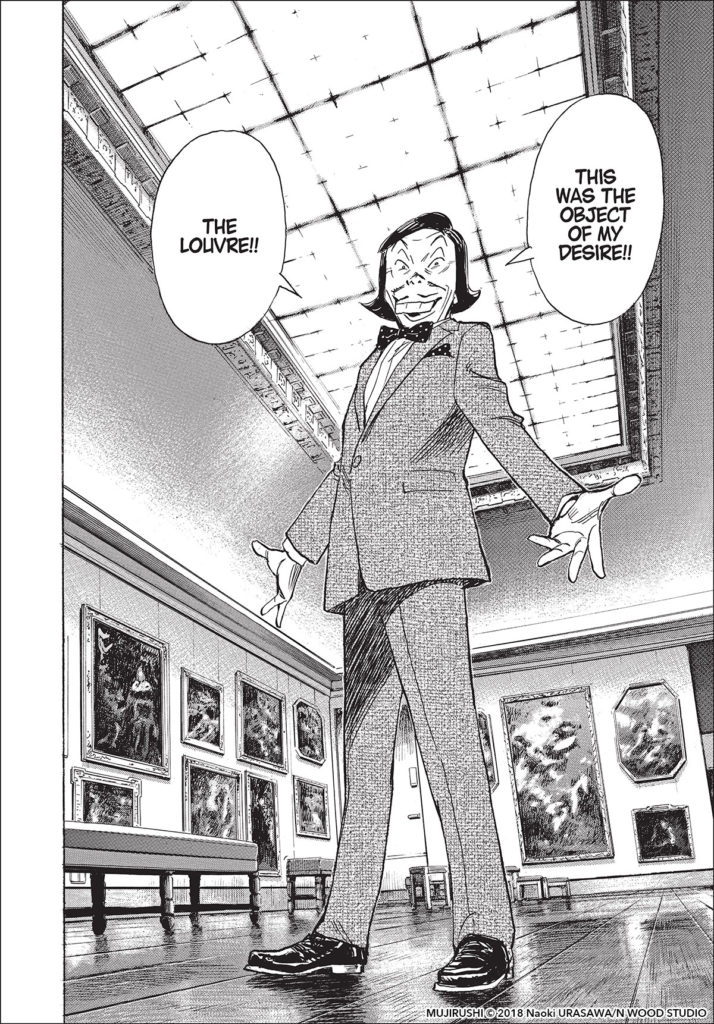
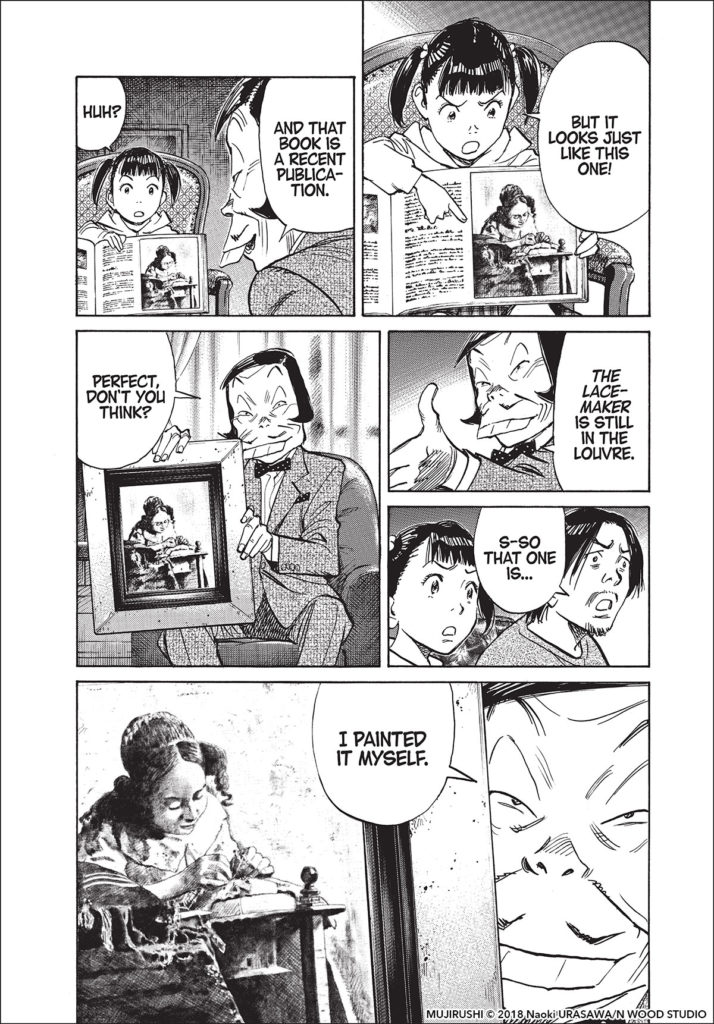
[DEB:] The other reason why Mujirushi is notable (and kind of related to Pluto) is that it’s another example of Urasawa paying tribute / giving a nod to another manga legend’s creations. This time, Urasawa incorporates a character originally drawn by Fujio Akatsuka, the creator of Osomatsu-kun and Tensai Bakabon. The villainous character in Mujirushi is a nod to Iyami, the buck-toothed con-man from Osomatsu-kun. While the Osomatsu-san anime is popular (and available from VIZ), other than a handful of bi-lingual editions of Tensai Bakabon and Osomatsu-kun, there’s not a lot of Fujio Akatsuka manga in English, which I think is a damn shame, since his style of gag manga humor is incredibly inventive and hilarious, besides being hugely influential in Japanese manga. (shrugs in Japanese)
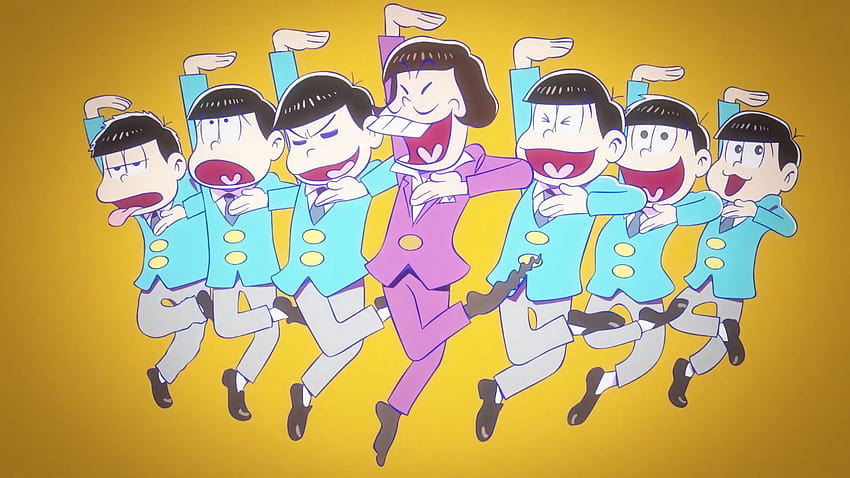
Currently, VIZ is serializing Urasawa’s current, ongoing series(!) for perhaps the first time about the same time as it’s being released in Japan, with Asadora!. With many of the mystery-thriller hallmarks of his previous series, the title is a promising one. It’ll be interesting to see if it eventually grows into the notoriety of his larger body of work.
[DEB:] Asadora! is similar to 20th Century Boys in that it has some Showa-era flashbacks and mysterious happenings that ordinary people have to figure out — including a mysterious sea monster that’s lurking in Tokyo Bay. Similar to Yawara! and Happy!, it features a scrappy young woman — but this time, she’s not an athlete, she’s a pilot, and her skills come in handy when dealing with whatever’s lurking in ocean…
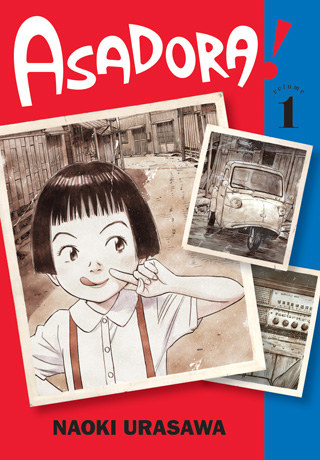
There’s so much more to say about Urasawa (somehow), but I should at least mention the context in which we’ve previously mentioned Urasawa here in the show notes–as a television host! That’s right, Urasawa hosts the television show “Urasawa Naoki’s Manben,” which is a documentary series where Urasawa interviews other manga creators! It’s never officially been translated into English, and while we hesitate to recommend pirated material this website is pretty much a masterclass in old school fansites, and offers truly invaluable insight into manga and the creative process. If you PROMISE to buy a Blu-Ray box set of this when it comes out, if it comes out, go ahead and check out the (unofficial) https://www.naokiurasawa.com/.
For a more uh… legal… look at Manben, while googling for this I found this episode of Manben on Osamu Tezuka! And it’s on a legit site, NHK World! It’s available online until July 2024, go check it out.
And again, this guy has been making masterful manga consistently since 1981. There’s a LOT more to his story than just the English publishing-history take I’ve offered here. My apologies. Hopefully we get a chance to come back to him in future.
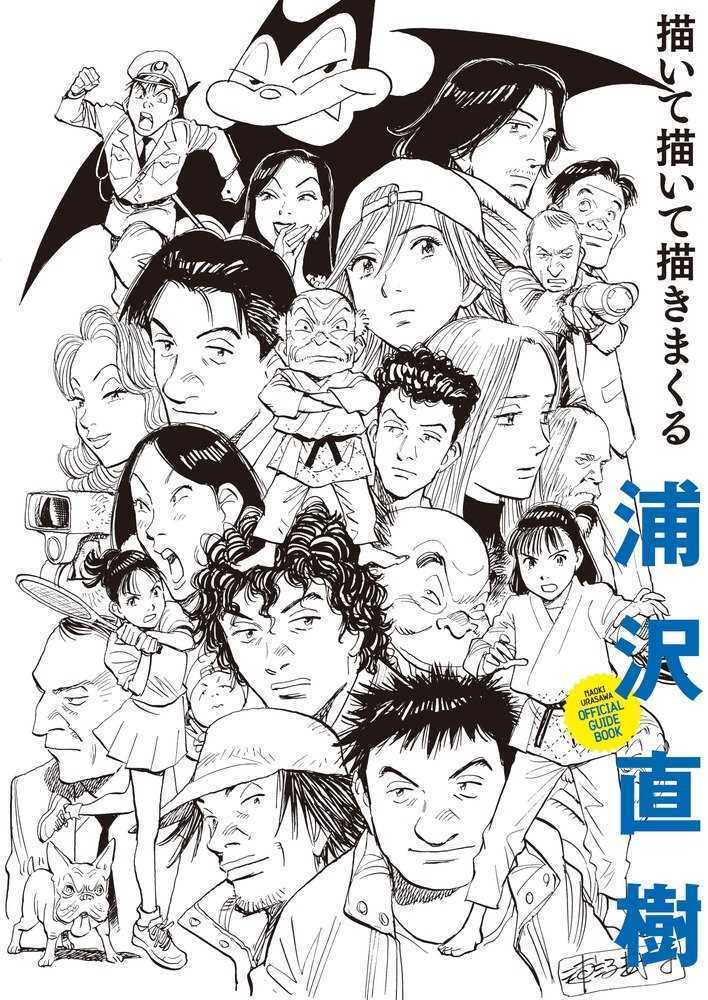
[DEB:] I saw the Naoki Urasawa retrospective exhibit in Tokyo a few years ago and there’s an “Official Guidebook” artbook that goes along with it — it’s worth seeking out if you’re a fan. Kinokuniya US has the Naoki Urasawa Official Guidebook available via mailorder. There was also a Naoki Urasawa exhibit at Japan House in Los Angeles that was pretty impressive too. I should probably post my photos from both exhibits on Mangasplaining Extra, because it was quite the experience.
03:20 Is this the Watchmen of manga? Probably not, no. David explains why in a little bit.
05:00 Really got my work cut out for me with this one. First off though, here’s (one) of the illustrations that Taiyo Matsumoto did of his young sell reading AKIRA.
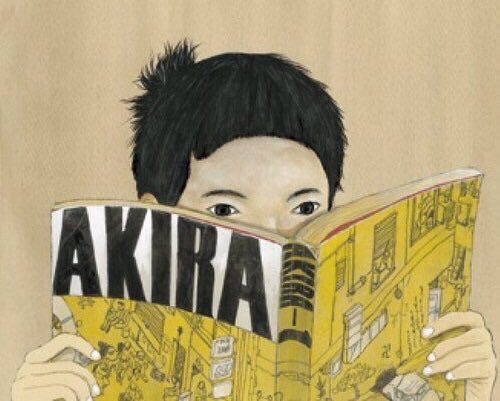
Funny story: This image actually could have ended up being the poster design for TCAF in 2013. Matsumoto-sensei offered us three options, in roughs, and this was one of them. We didn’t want to have a copyrighted work on the poster, and so he gave us a stunning illustration featuring some book covers of comics that he made up, instead. It’s a great piece, but it’s funny to see the iconic AKIRA read get some much traction over the years.
Okay, so back to my anecdote: Taiyo Matsumoto talking about generations of readers. So there’s a website, a fan-site, that again is operating a little extra-legally(?) and translating them into English, and it’s honestly amazing of them to do so. It’s called MangaBrog and they’re great.
This interview with Taiyo Matsumoto, Inio Asano, and the (as of yet untranslated into English) Keigo Shinzo, is I believe what I was talking about here. It was maybe the group coming up with the theory.
Go check it out, it’s really good.
07:34 I do feel a little bad that Yotsuba&! has become the yardstick for “the first volume doesn’t work but it gets really good in volume 2 and beyond,” in our personal cannon. It’s a little weird.
08:20 The sequence with Atom’s appearance at the end of volume 1 is striking.
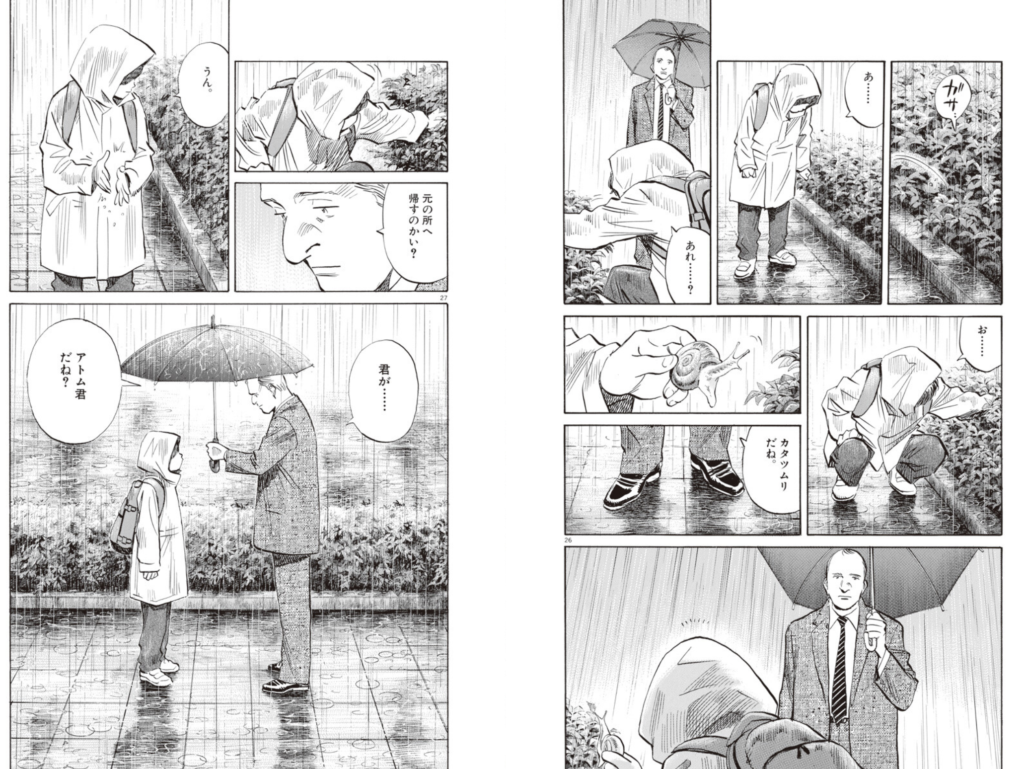
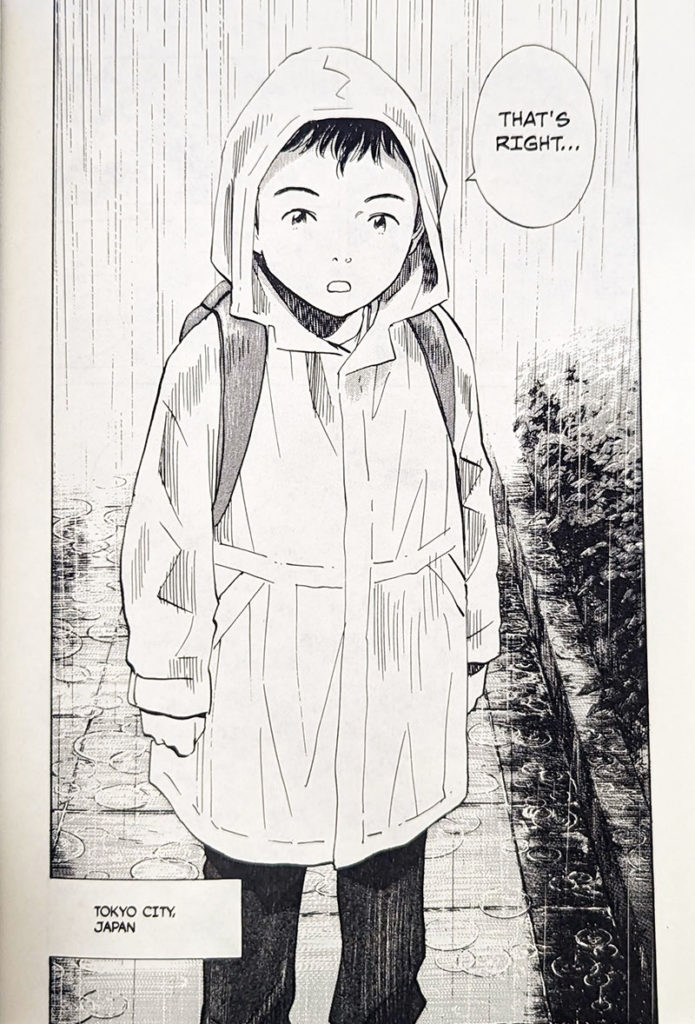
09:16 [DEB:] So when we’re saying “Oh my god, the North story,” we’re referring to Act 4, 5 and 6 of Pluto vol. 1, where we meet North No. 2, a robot who fought in the “39th Asian War” but comes to a castle in Scotland to work as a butler to a blind composer. Meanwhile, in the original Astro Boy story, North is a robot servant to a scientist, and his introduction, battle with Pluto and his defeat all happens within 9 pages. But in Pluto, North No. 2’s story is 76 pages long, and by the time it ends, it has much more emotional impact on the reader.
These first two pages are how North and his master is introduced in the original Astro Boy story.
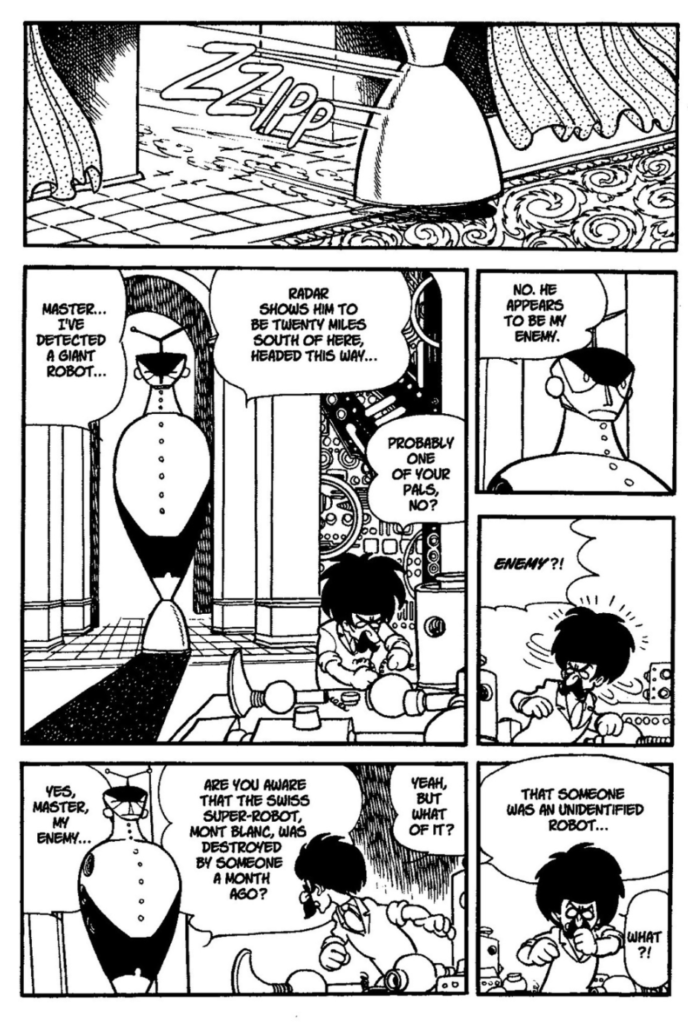
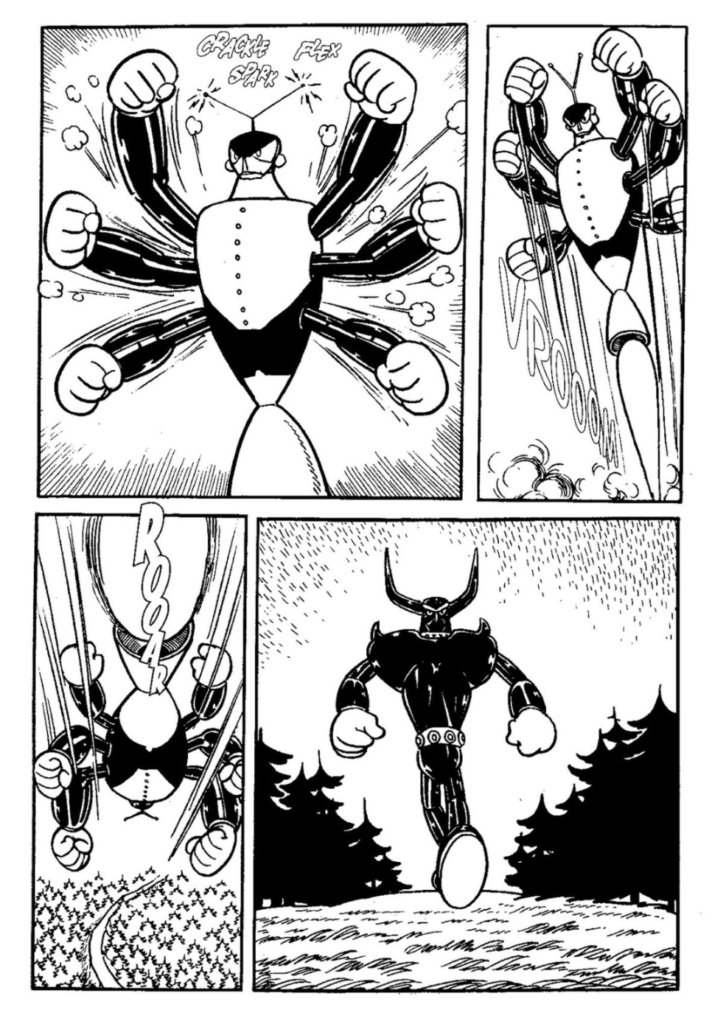
Compare with the Pluto version of North No. 2 entrance into the story, as he introduces himself to his new employer, a blind composer who is tormented by memories of his deceased mother and a song that haunts him.
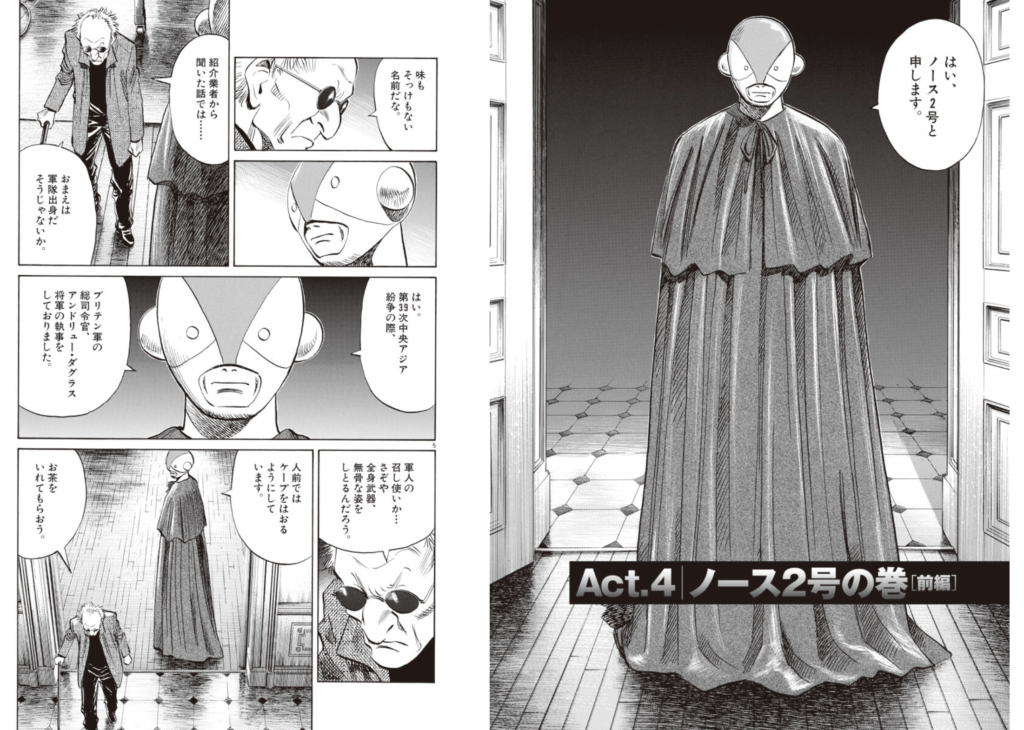
In Urasawa’s version of the story, both man and robot are haunted by their pasts, as North No. 2 deals with PTSD from his time on the battlefield.
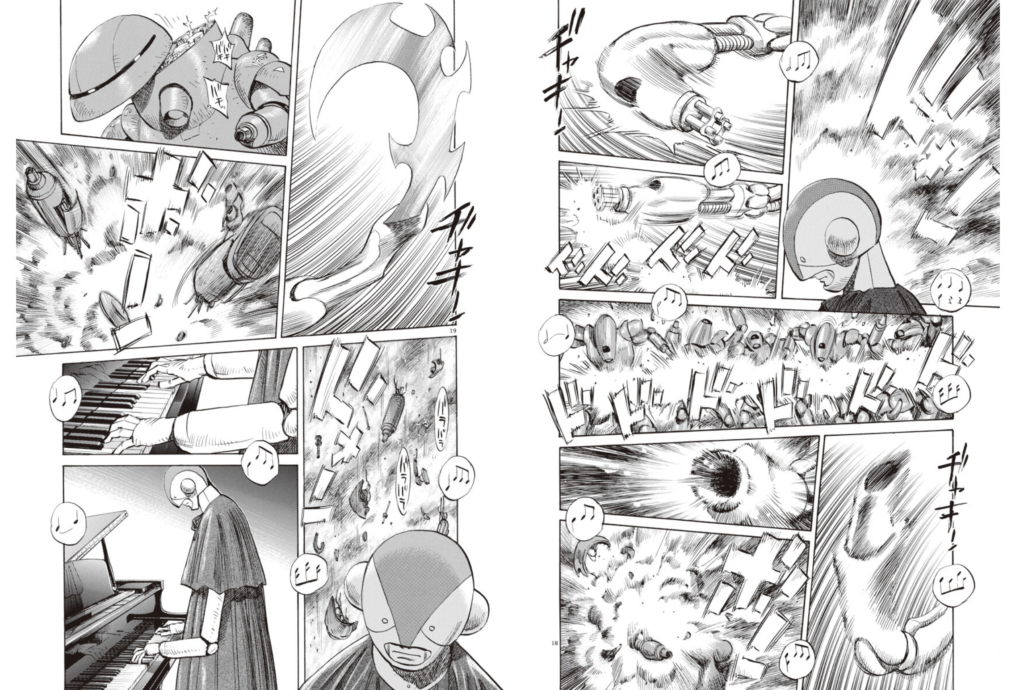
And when North No. 2 does go off to battle super robot Pluto, the battle takes place in the sky, and only clouds in the far up in the sky give you a hint that something terrible has happened.
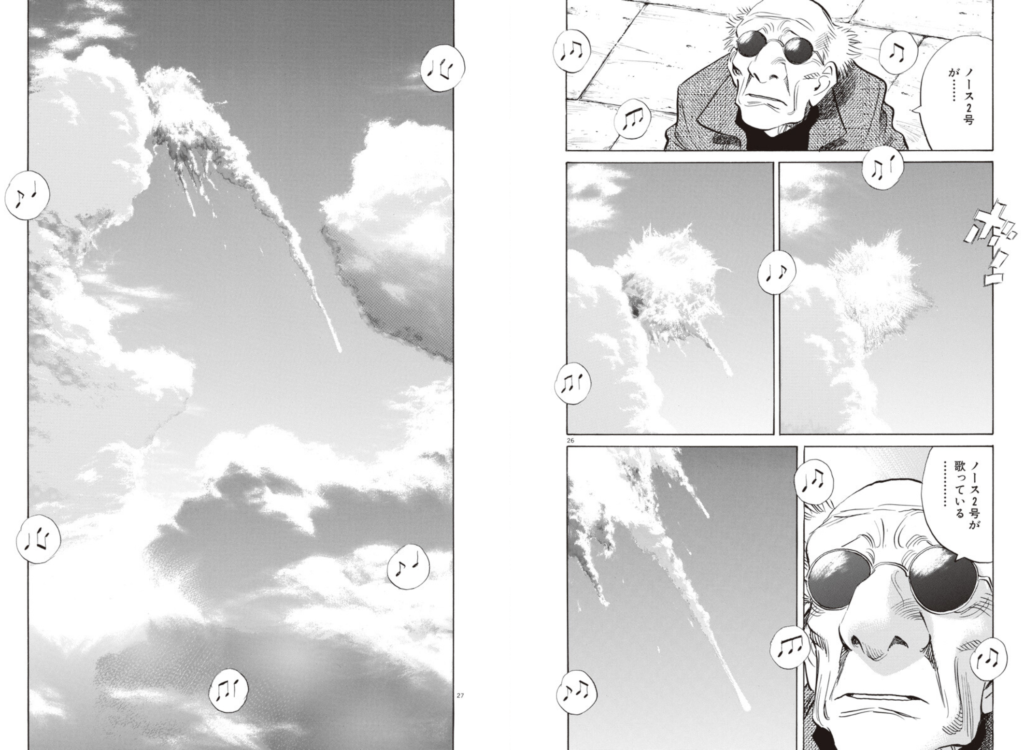
12:10 Maybe it’s not the Watchmen of manga, maybe it’s the Ultimate Spider-Man of manga? Heh. In some quarters that’s a pretty damning comparison, but I do completely get what David is saying and I think it’s a strong take. Particularly in his thoughts about formalist storytelling in Watchmen versus Pluto.
That said, after thinking about it this episode, I don’t think it’s either Watchmen or Ultimate-Spider-Man, I think it’s maybe something different, particularly as USM stopped ‘adapting’ a story at a certain point and became its own thing. I dunno though, I think this is a pretty interesting idea. Feel free to sound-off in the comments!
(Watchmen is a graphic novel by Alan Moore and Dave Gibbons. Ultimate Spider-Man is a comic book series by Brian Michael Bendis and Mark Bagely).
15:30 David DID write quite a bit about Pluto on his website 4thletter.net. He even tagged a lot of those entries, and you can go check them out. 4thletter.net/tag/pluto/
[DEB:] This is a neat side-by-side comparison of the characters in the Astro Boy story and Pluto, compiled by manga scholar Xavier Guilbert from his review of Pluto.
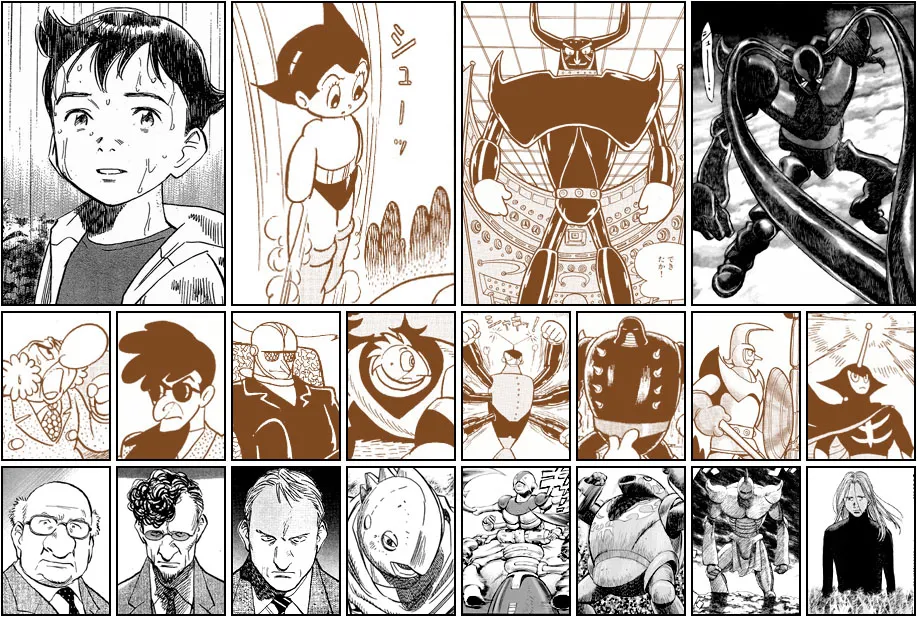
18:00 ABOUT PLUTO (As written on the back of Pluto Volume 1, by VIZ Media)
In an ideal world where man and robots coexist, someone or something has destroyed the powerful Swiss robot Mont Blanc. Elsewhere a key figure in a robot rights group is murdered. The two incidents appear to be unrelated…except for one very conspicuous clue – the bodies of both victims have been fashioned into some sort of bizarre collage complete with makeshift horns placed by the victims’ heads. Interpol assigns robot detective Gesicht to this most strange and complex case – and he eventually discovers that he too, as one of the seven great robots of the world, is one of the targets.
VIZ Media
So yeah, spoilers.
20:00 Dad-comics! In that they are comics for adult men, and not say, seinen manga which are kind of like shonen comics, but with better and more violence and worse and more sex. #HotTake
20:50 I wholly apologize for not knowing shit about Hannibal.
22:20 We covered Jiro Taniguchi’s oeuvre (and the duality of sad Taniguchi versus Mountain-climbing Taniguchi) in our episode on A Journal of My Father.
23:25 Still ended up talking a lot though. I’m working on it.
24:10 The city-scapes in this book, as Chip and I mentioned, really are gorgeous. Like, what incredible scene-setting.
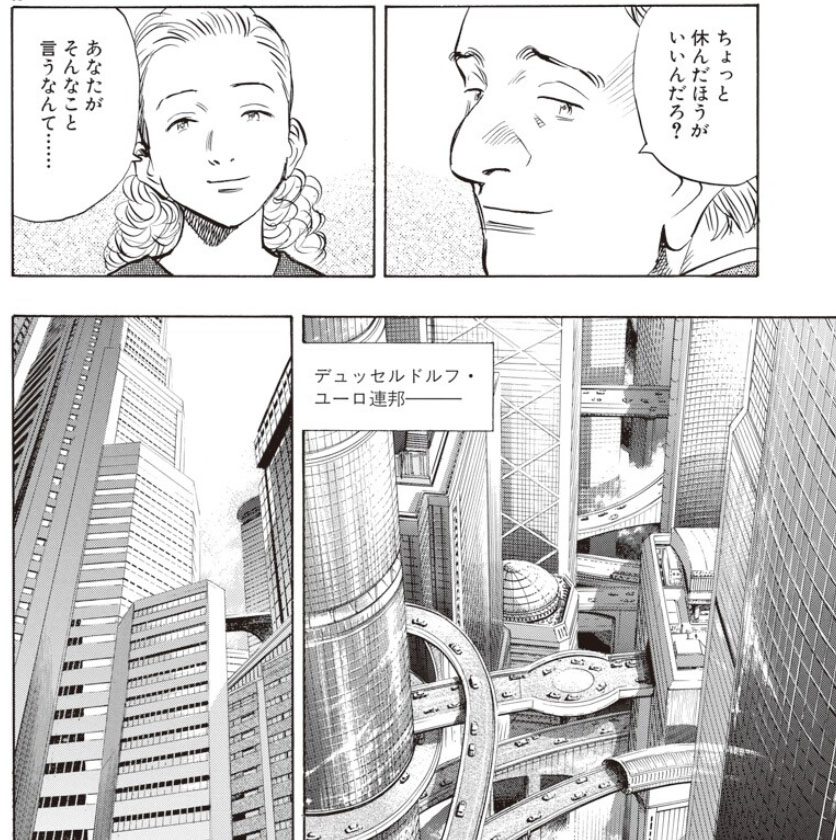
26:00 As a point of clarification: The series that we know as Astro Boy, with its lead character Astro, was originally titled Tetsuwan Atom (Iron Atom!) in Japanese, and his name is Atom. But I grew up with him as Astro, so he’s Astro to me. 🙂
27:17 It’s time for Chip’s Colour Corner! I think Chip is just… wrong? I don’t know what to say here. But here’s page 1 by way of example:
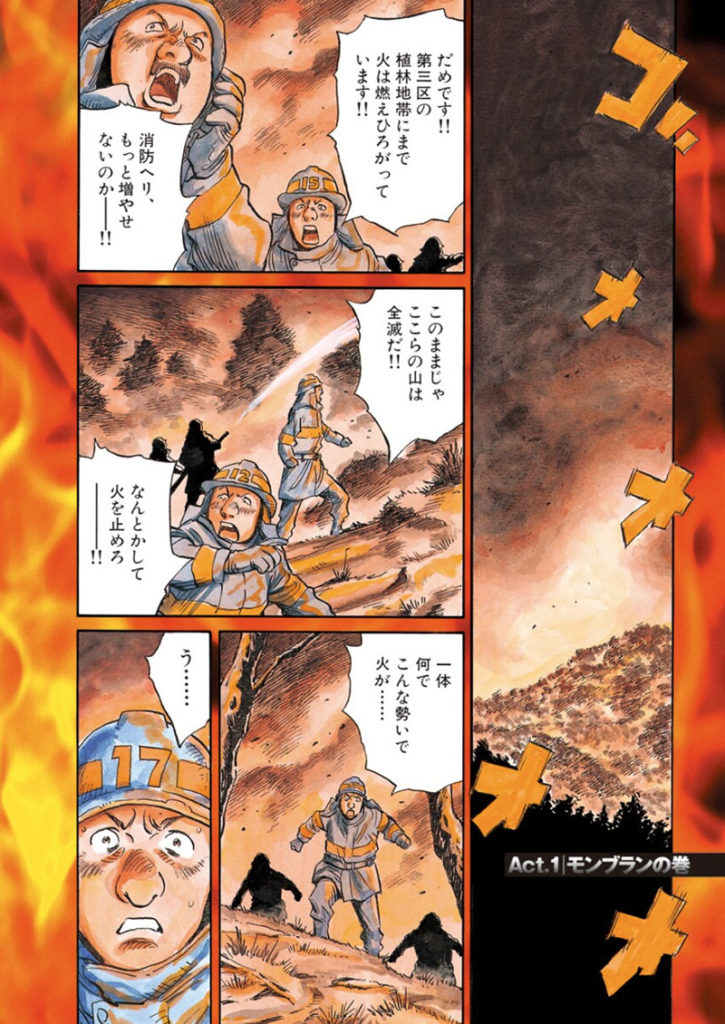
And then here’s the next 8 pages, which show the gradual fade from ‘full’ color to limited palette to B&W. I think it’s not only well done, but specifically smart of him to choose orange as his accent color, to thematically carry through the color into the limited color section.
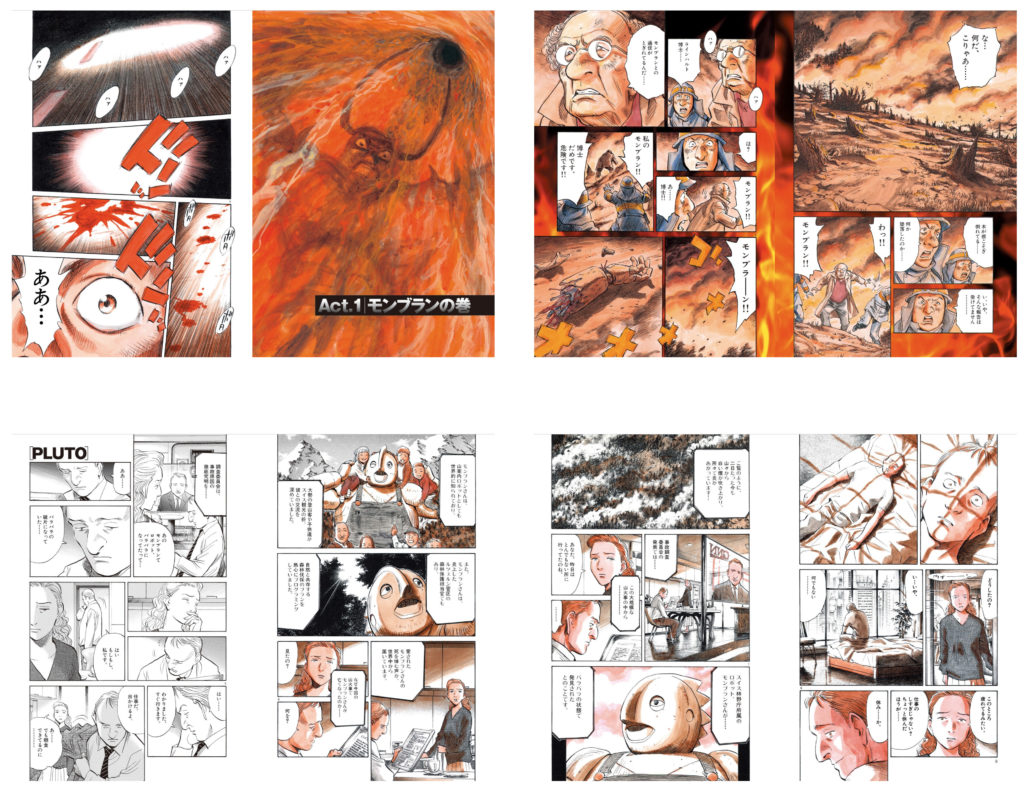
29:15
“It’s by someone who doesn’t enjoy using color”
-Chip Zdarsky
Here’s a coloring tutorial just released by Urasawa, featuring Gesicht from Pluto!
(sorry, Chip)
30:00 No spoilers for Pluto volume 8, sorry. But we did find that the Japanese digital editions of Pluto include all of the original color pages, and they looks great. Deb grabbed these additional pages that are in color in the digital edition, that were reprinted in B&W in the English edition:
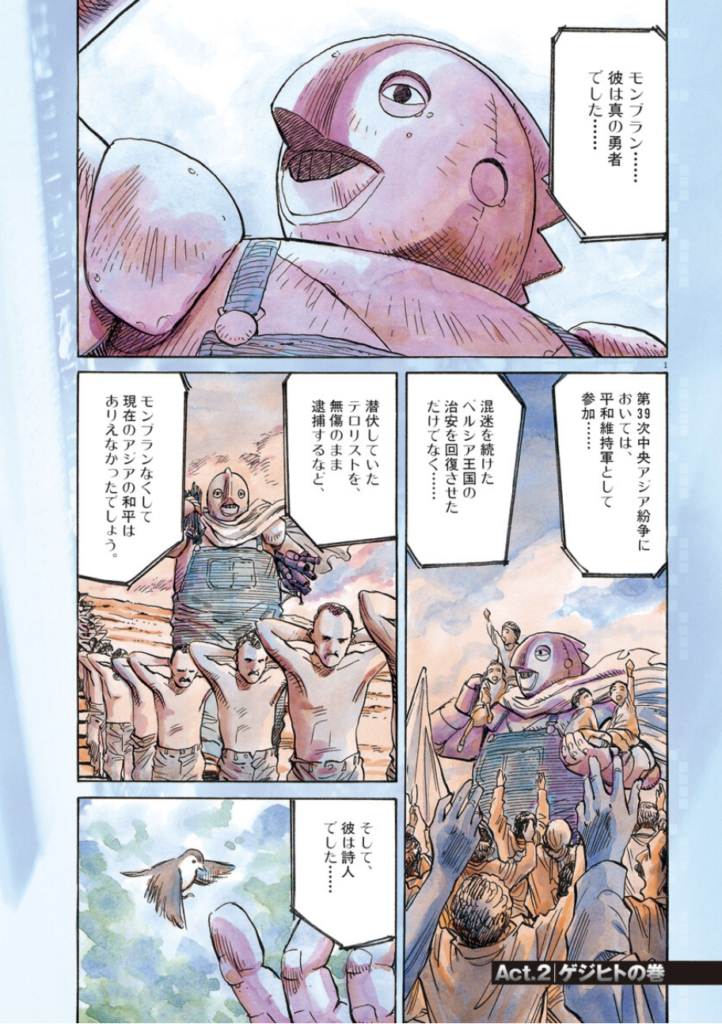
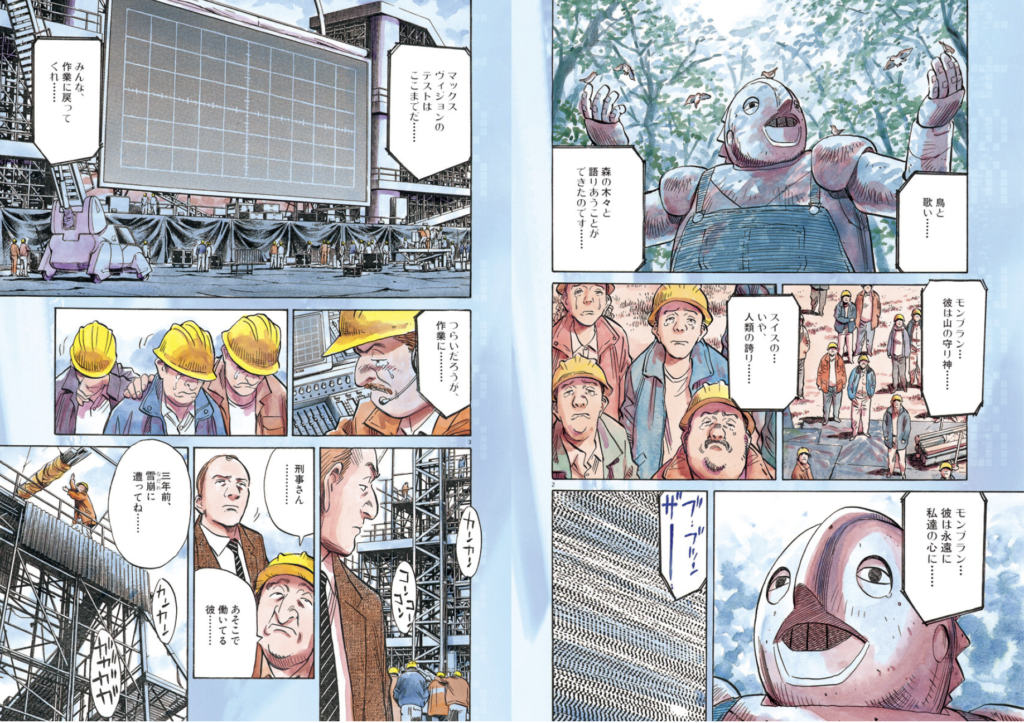
30:30 As mentioned, the special editions of Pluto were released in close proximity to the standard editions, and I bought them all. Each volume was printed oversized (close to American comic book size, same size as it would have appeared in the magazine), and each came with a bonus item that ranged from stickers or posters to bonus books that included a complete reprint of the original Tezuka story and a book with color artworks and sketches. These are seriously cool collector’s items, if you can buy the set intact, and I am so, so happy to have a set. 😀
[DEB:] A shout-out to Mangasplaining pal David Hyde, who asked me to find him a copy of these amazing editions of Pluto on my recent trip to Japan and I FOUND A WHOLE SET for a ridiculously low price at a used book store for him. So dreams do come true.
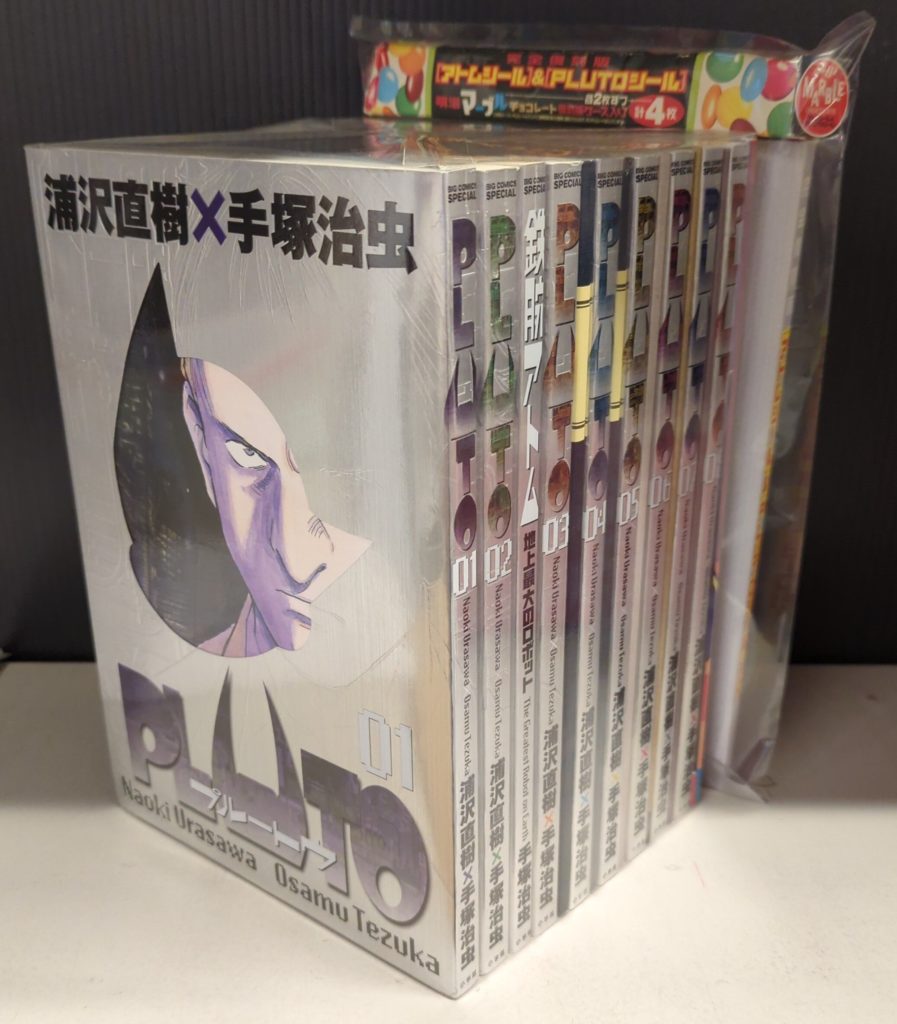
Here’s that “Atom taking off for the final battle” spread I mentioned…
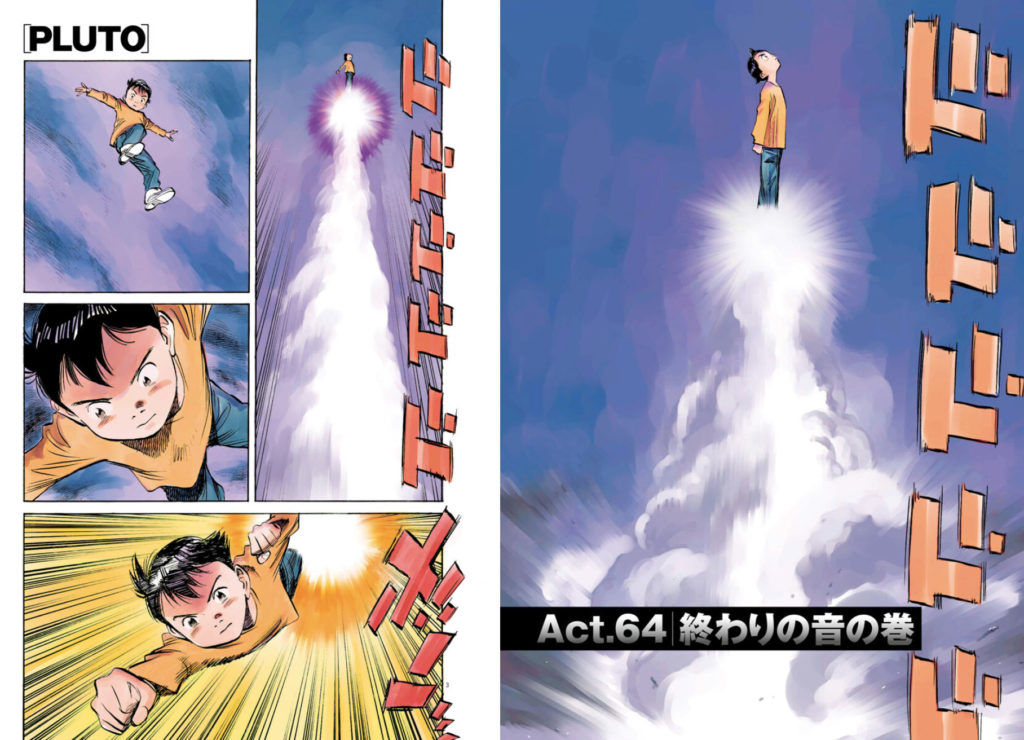
33:50 Y’know, translation is more of an art than a science, so for the sequence we’re talking about that came across a little… clunky…
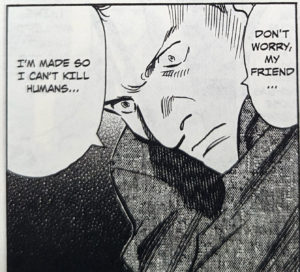
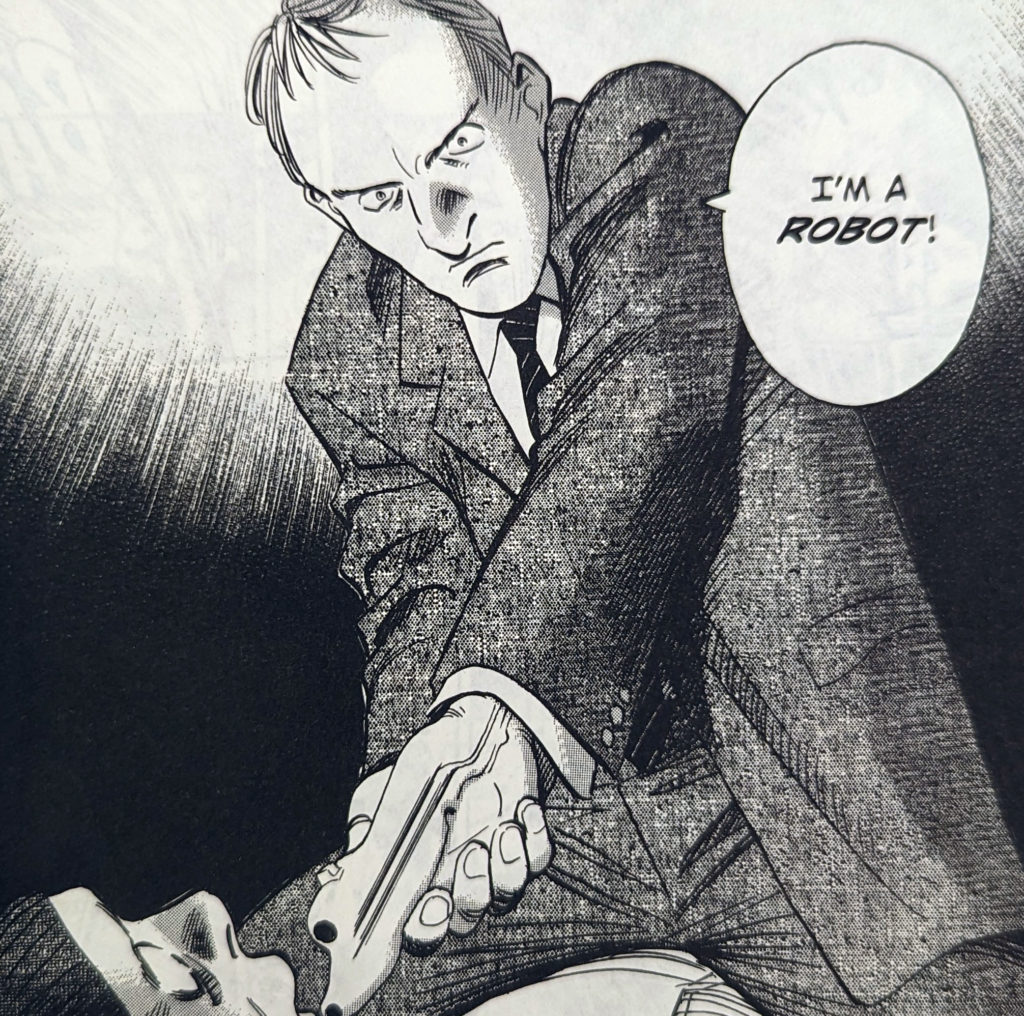
And, that’s almost exactly what it says in the Japanese, it’s more-or-less a direct translation.
I’m interested to see if this sequence makes it to the anime as well… This is a line that’s definitely worse spoken aloud.
36:28 Marty Gross, the person who Chip mentions working with Japanese pottery imports and Astro Boy merchandise is also involved with securing rights for Japanese films for Criterion, among many other projects. Really interesting reading, check out his Wikipedia page if you’re curious.
37:20 Shout-out to the two standby syndicated cartoons I forgot to mention, Spider-Man and The Flintstones.
40:00 [DEB:] In case you’ve never seen and compared how Nine Inch Nails performed “Hurt” vs. the Johnny Cash version, here you go.
41:30 While we were recording here I wanted to jump in so badly to mention our upcoming MSX title Search and Destroy, adapted from Tezuka’s Dororo…. But it hadn’t been announced yet and I didn’t know when this episode would run. What it means to be human is at the core of Search and Destroy, and I think it’s really gonna hit with people when it comes out! Sorry for the plug! But I think you’ll dig it!
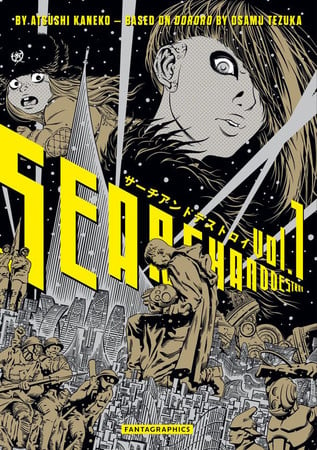
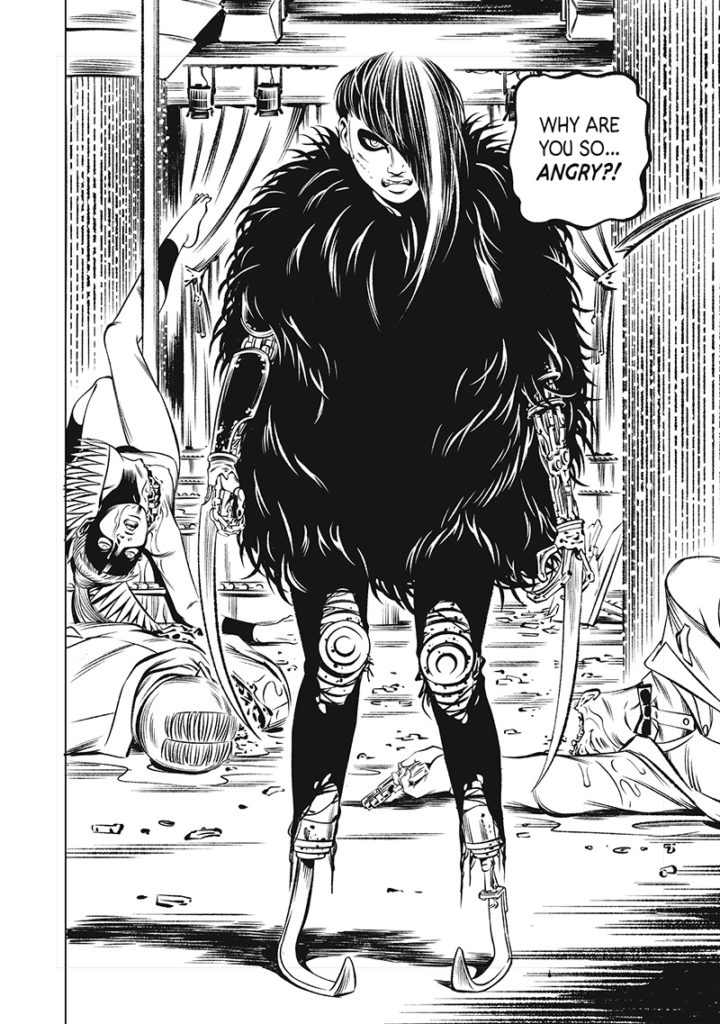
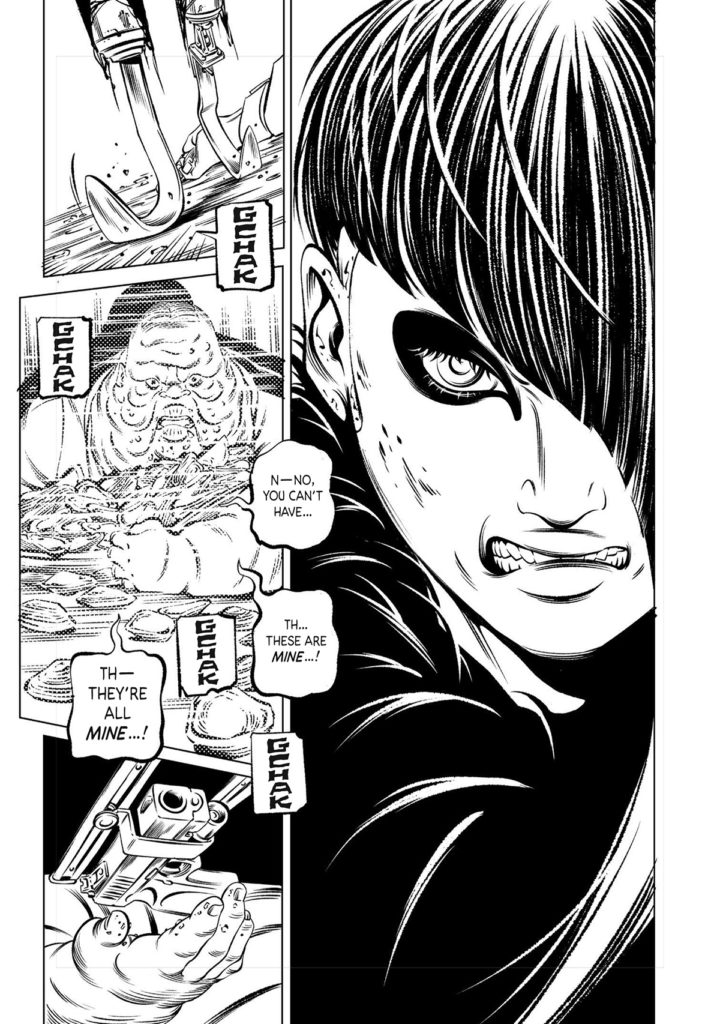
43:30 Inasmuch as Pluto is an adaptation of that Astro Boy, it might be better to say that it’s a pretty significant extrapolation of that story.
45:45 Yeah, the Marvel fashion brand thing in Japan is genuinely confusing.
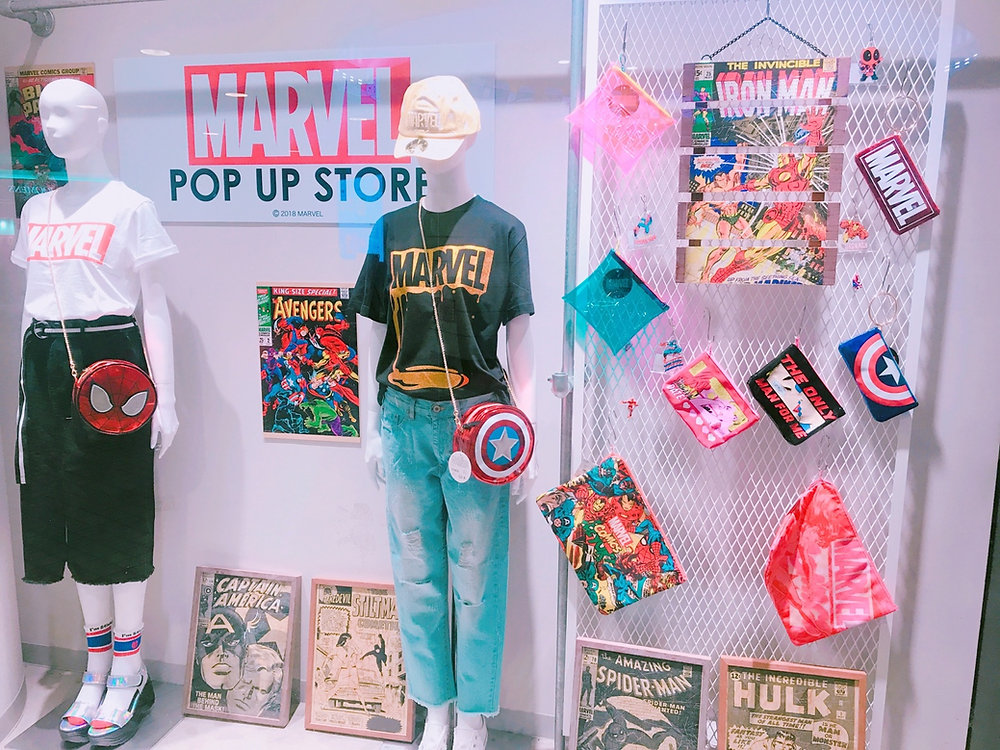
48:15 So NORTH #1… I have no idea if that PARTICULAR character shows up, but a similarly mature “Prequel Series” IS being released into English right now, courtesy of, of all people, Brit publisher Titan Comics. (under their, ahem “Titan Manga” imprint) ATOM: The Beginning by Tetsuro Kasahara and Masami Yuuki is an original manga that acts as a prequel to Astro Boy… and in a lot of ways, something of a prequel to Pluto. Not an endorsement, I haven’t read it yet, but it’s a fascinating work.
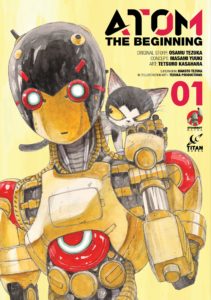
[DEB:] There’s also the animated adaptation of ATOM: The Beginning that’s licensed for English release by Sentai Filmworks that’s also streaming on Amazon Prime.
51:00 That’s a reference to The Jetsons, an animated cartoon from the 1960s that also was a mainstay of TV at grandma’s house.
And yeah, Rosey the robot maid from The Jetsons looks kind of like the wife robot character here in Pluto. At least, that’s all I could think when I saw her.
[DEB:] But yeah, the police robot’s wife finding out that her spouse has died? Devastating.
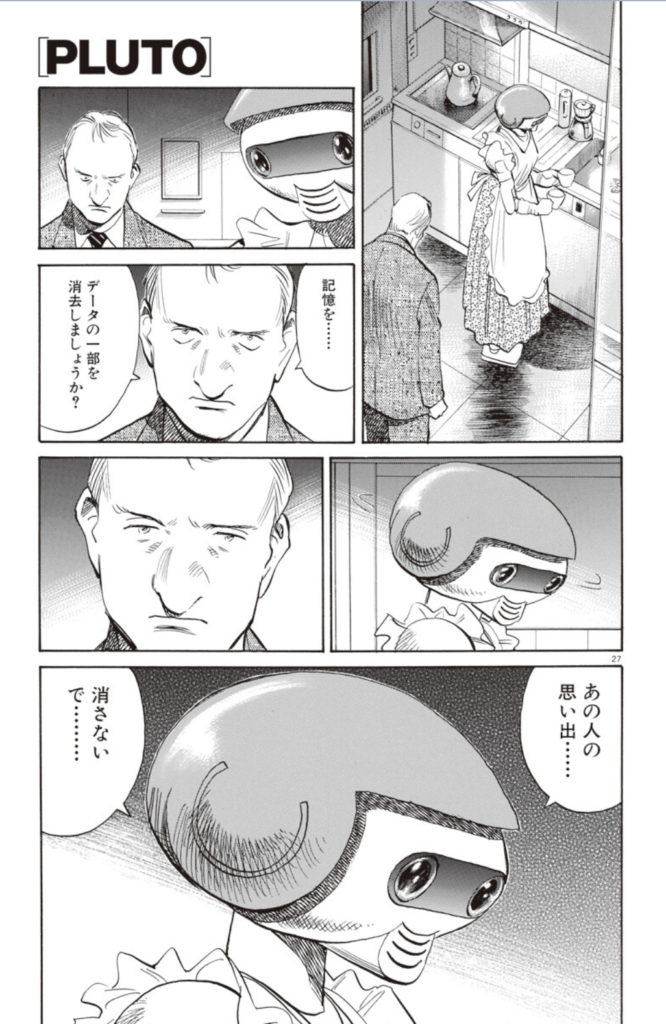
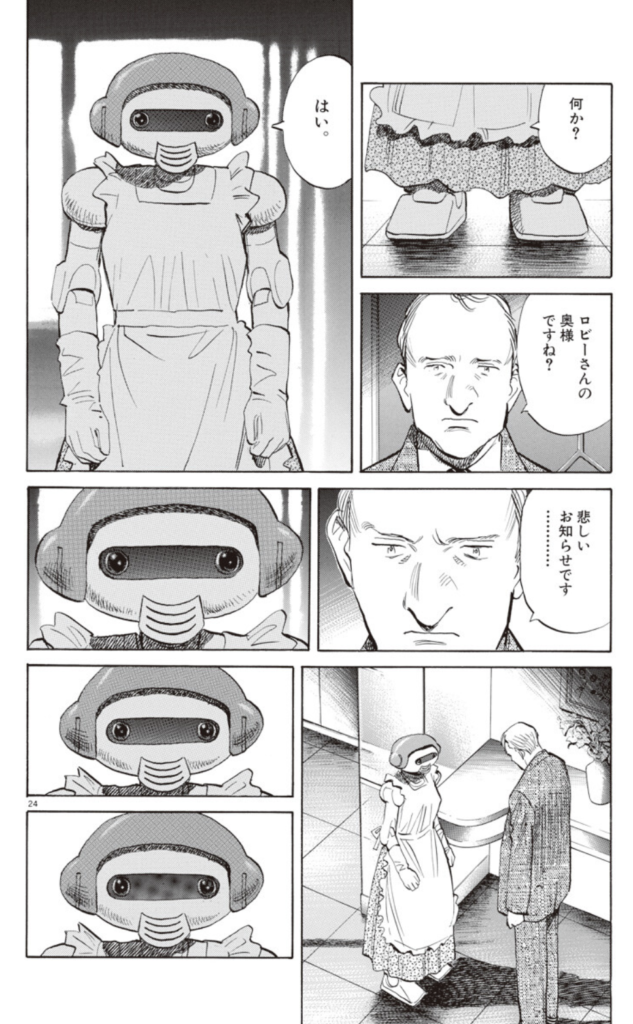
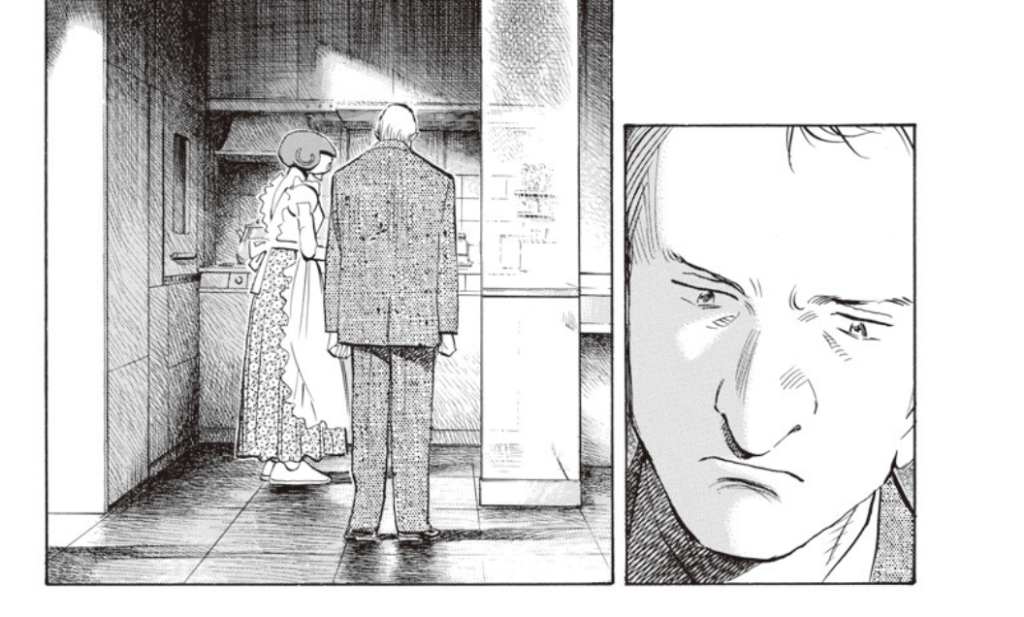
53:15 David mentions that the underground doctor with the expensive surgery? Who fixed North #2’s master’s eyes on page 122? Who could THAT be…?
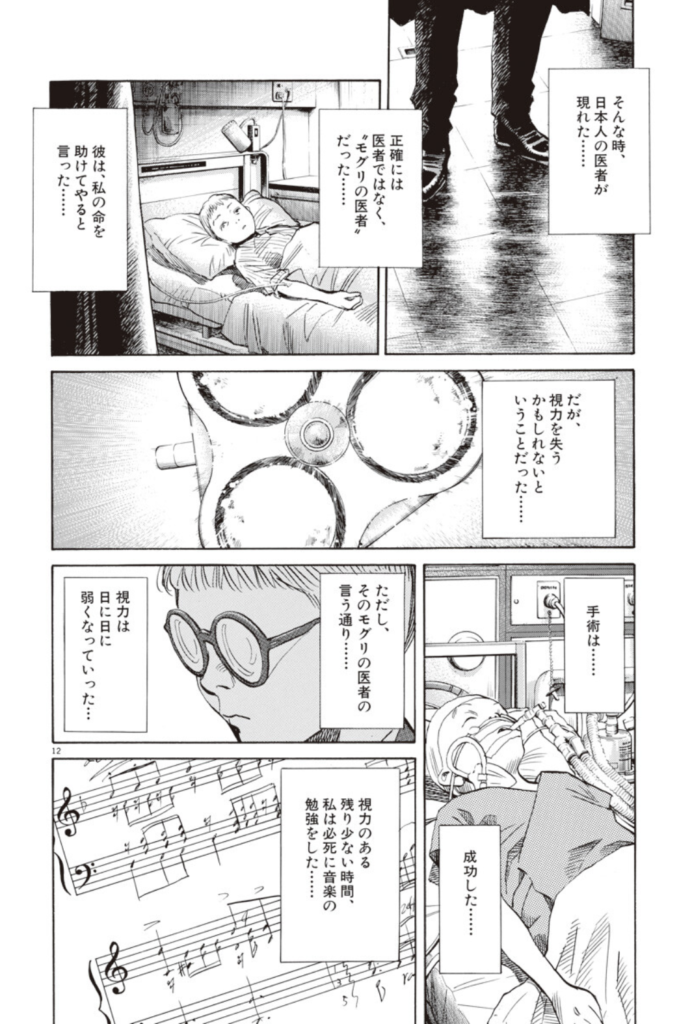
That’s a pretty fun Easter egg. Good job, Urasawa-sensei!
55:25 Deb shouts out Master Keaton as a popular series that’s easy to pick up and enjoy, with great pulpy short stories. Actually it sounds almost exactly like the sort of “Airport Pulp Thriller” that we talked about last episode, according to volume 1:
Taichi Hiraga Keaton, the son of a Japanese zoologist and an English noblewoman, is an insurance investigator educated in archaeology and a former member of the SAS. When a life insurance policy worth one million pounds takes Master Keaton to the Dodecanese islands of Greece, what will he discover amidst his scuffles with bloodthirsty thieves and assassins?
VIZ Media
If you liked that aspect of Pluto then definitely check out that series, also available in omnibus form from VIZ Media.
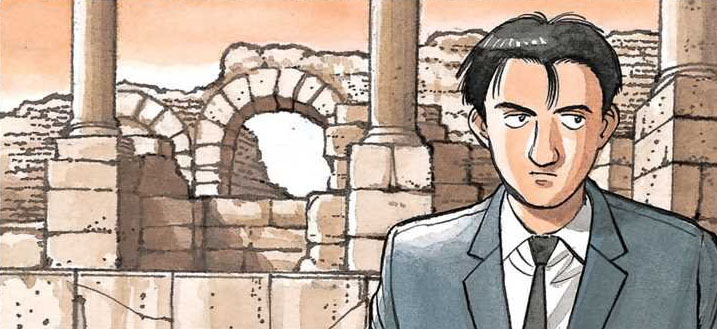
57:12 THE BREAK
Okay, so we’re going to pick some books, but as mentioned earlier the numbers for the episodes I’m talking about are completely wrong. Sorry!
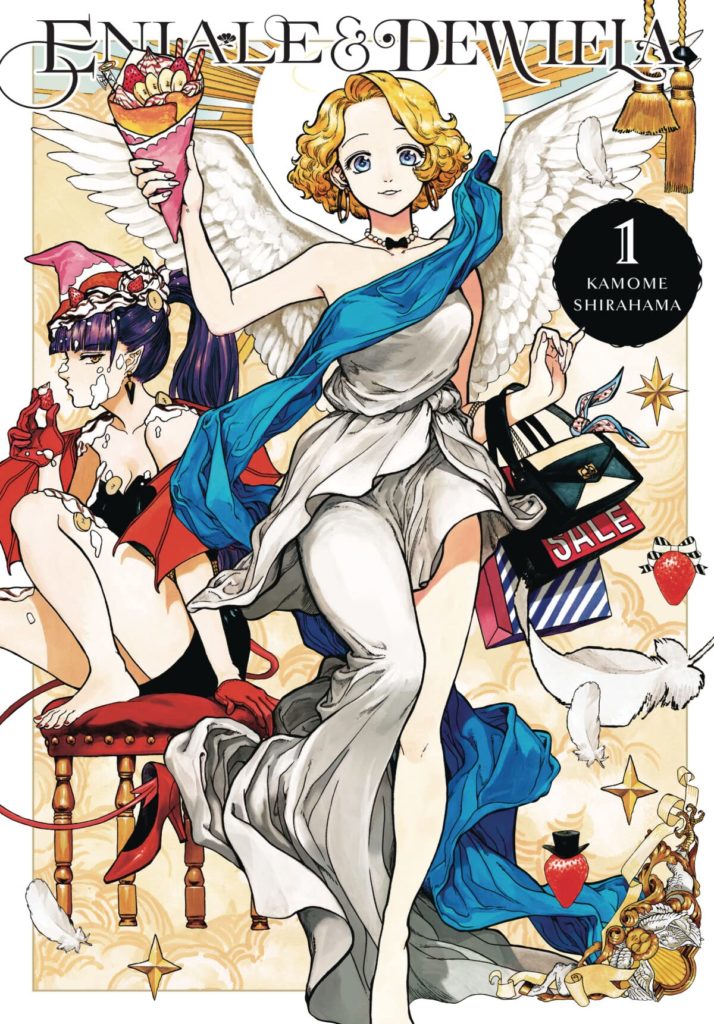
DAVID recommends Eniale & Dewiela Volume 1, by Shirahama Kamome, published by Yen Press.
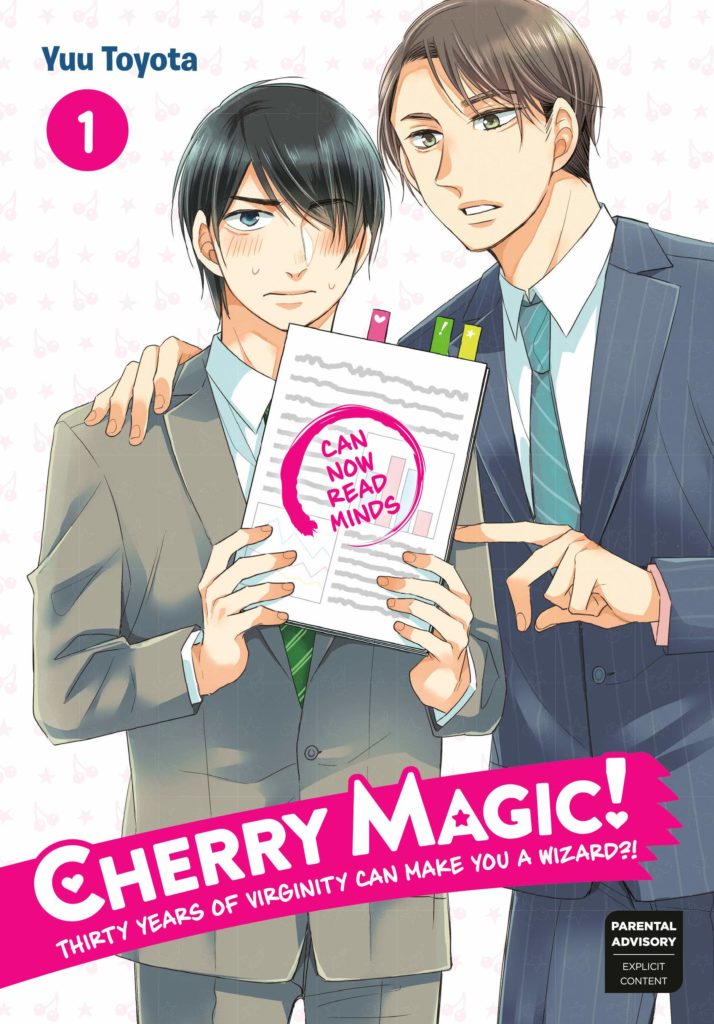
DEB recommends Cherry Magic! 30 Years of Virginity Can Make You A Wizard?! Volume 1, by Yuu Toyota, published by Square Enix.
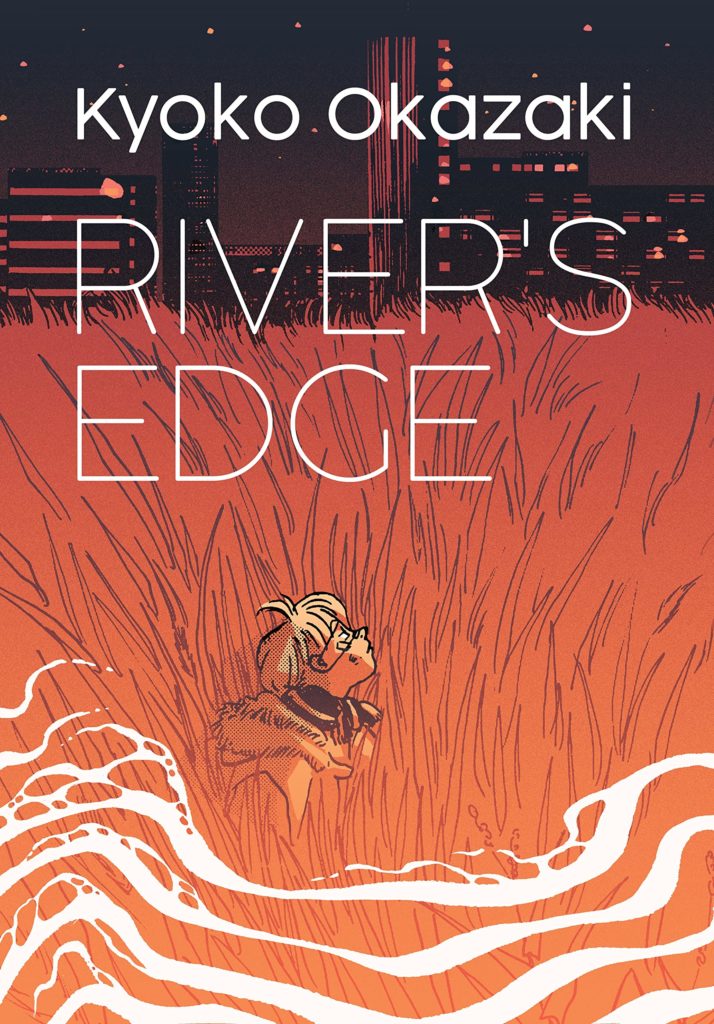
CHRISTOPHER recommends River’s Edge, by Kyoko Okazaki, published by Kodansha.
(Christopher here: I should note that in between picking this book and when this episode is airing, I’ve started doing some consulting work with Kodansha. I picked this book without editorial interference, but it’s important to own up to potential biases up front! It shouldn’t affect anything here.)
So that makes the upcoming schedule.
- Ep. 100 Okinawa, by Susumu Higa (Fantagraphics/MSX)
- Ep. 101 Real vol. 13 by Takehiko Inoue (VIZ Media)
- Ep. 102 Not All Girls Are Stupid, by Minami Q-ta (Starfruit Books)
- Ep. 103 What’s Michael? by Makoto Kobayashi (Dark Horse) + Garfield / Heathcliff
- Ep. 104 Blood Blockade Battlefront by Yasuhiro Nightow (Dark Horse)
- Ep. 105 Goodbye, Eri by Tatsuki Fujimoto (VIZ Media)
- Ep. 106 Nejishiki by Yoshiharu Tsuge (D&Q)
- Ep. 107 Eniale & Dewiale Volume 1, by Shirahama Kamome (Yen Press)
- Ep. 108 Cherry Magic Volume 1, by Yuu Toyota (Square Enix)
- Ep. 109 River’s Edge, by Kyoko Okazaki (Kodansha)
This might change too, as we have one bonus interview episode floating around that needs to be slotted in too. More to come!
And that’s this week in Mangasplaining! This episode is also available wherever you get your podcasts, so please subscribe and leave a review, so others can discover our show.
Also, if you’d like to get the latest episode delivered straight to your inbox along with exclusive interviews, articles and new chapters of manga you can’t read anywhere else, subscribe to our Substack newsletter. See what you’re missing at Mangasplaining Extra!
Next week on Mangasplaining:
Get ready for our special episode on Susumu Higa’s Okinawa, the first Mangasplaining Extra co-publication with Fantagraphics! David and Chip interview the book’s translator Jocelyne Allen and Editor Andrew Woodrow-Butcher! Stick around for this episode next week!
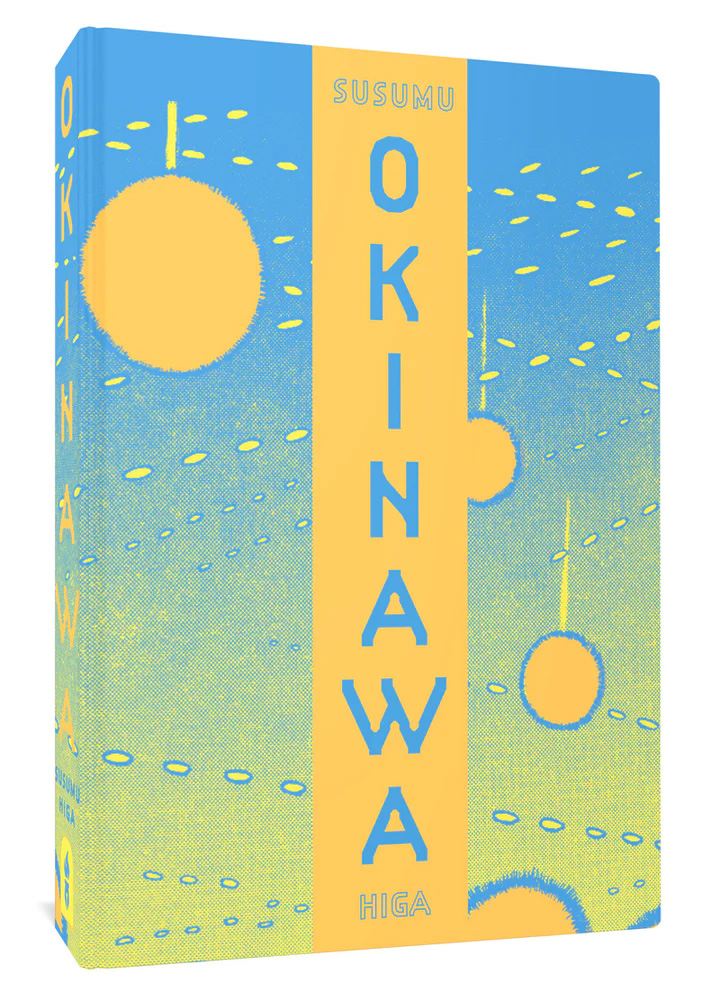
Thanks so much for listening! Please support your local comic and manga specialty shop when purchasing these books, and you can find one near you at comicshoplocator.com. You can also check your local library for print and digital lending options, they have TONS of manga! Finally, thanks to D.A.D.S. for their musical accompaniment for this episode.
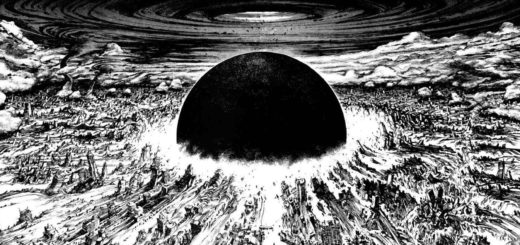
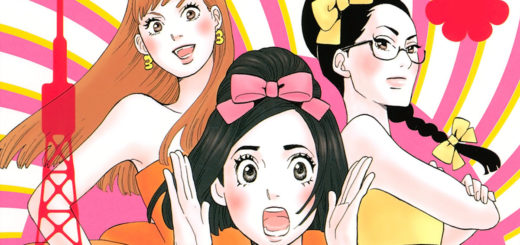
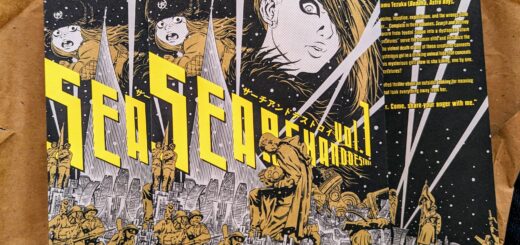
The name of the robot detective character is not “Geischt” or “Geist” (“ghost”, “spirit”), but rather “Gesicht” (“face” or “eyesight”). Given that robots have a higher chance than humans of having a name tied to their qualities, the difference might matter.
Thanks! Sorry for the typo, and the additional information! We’ll edit the post.